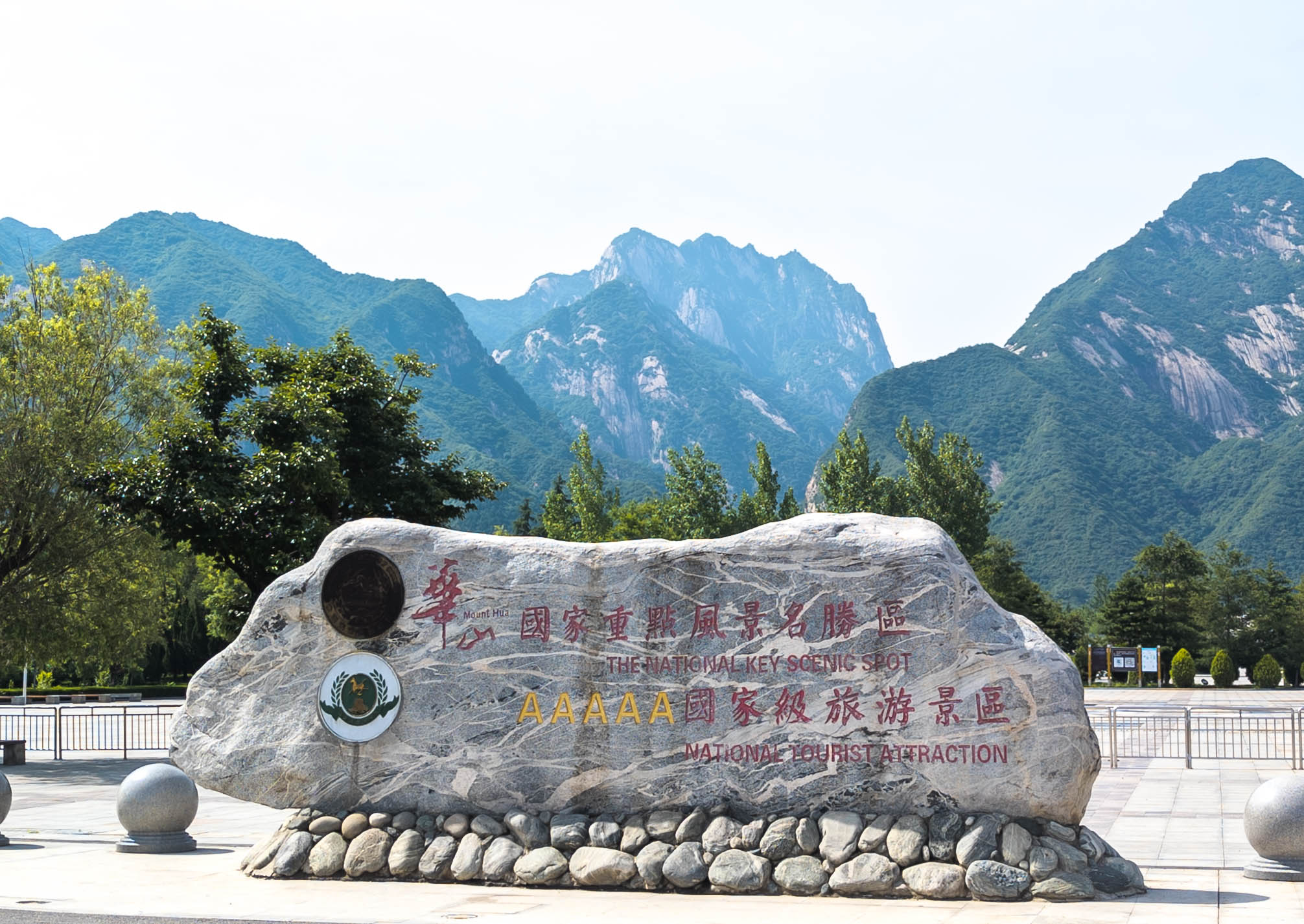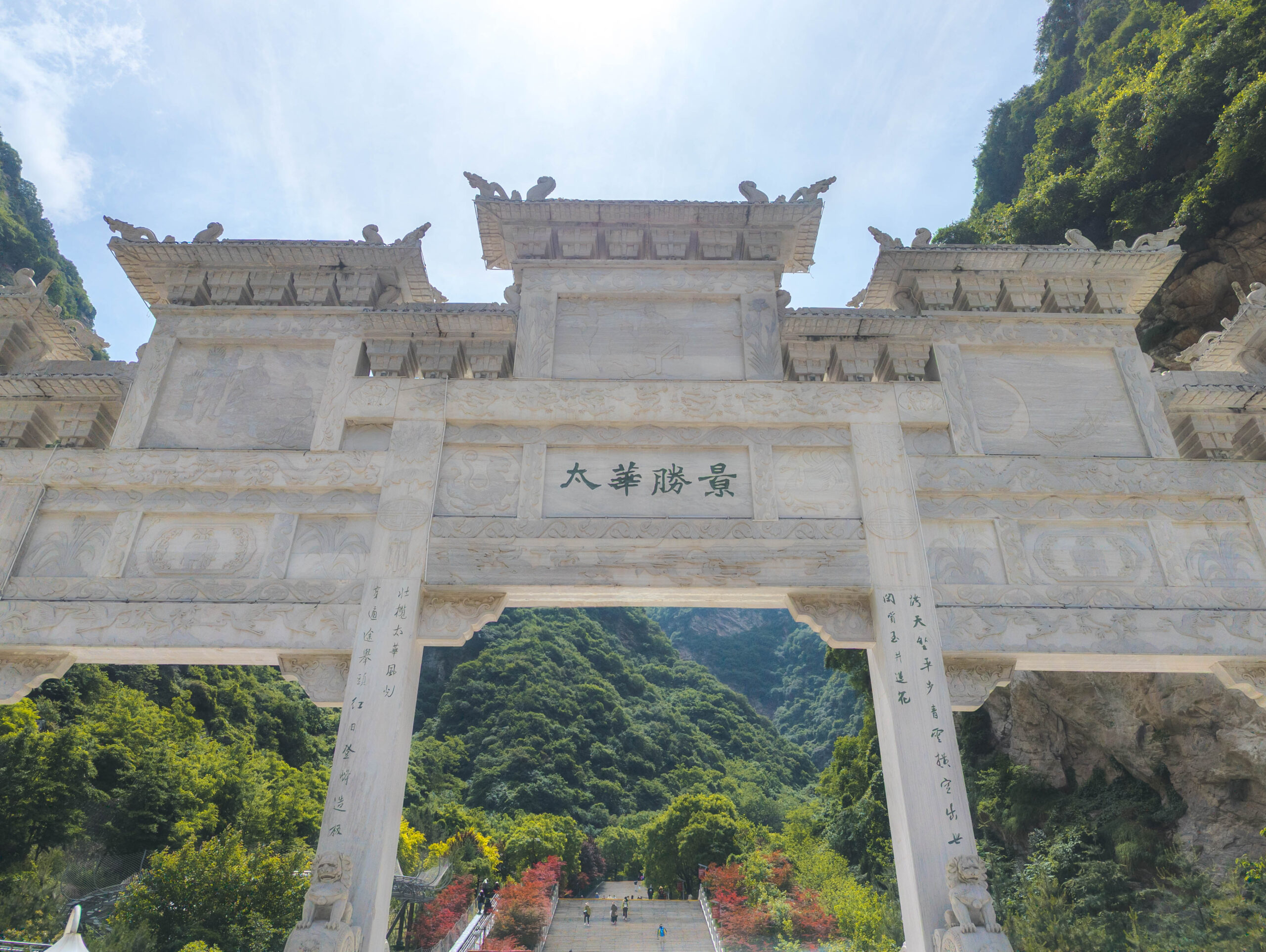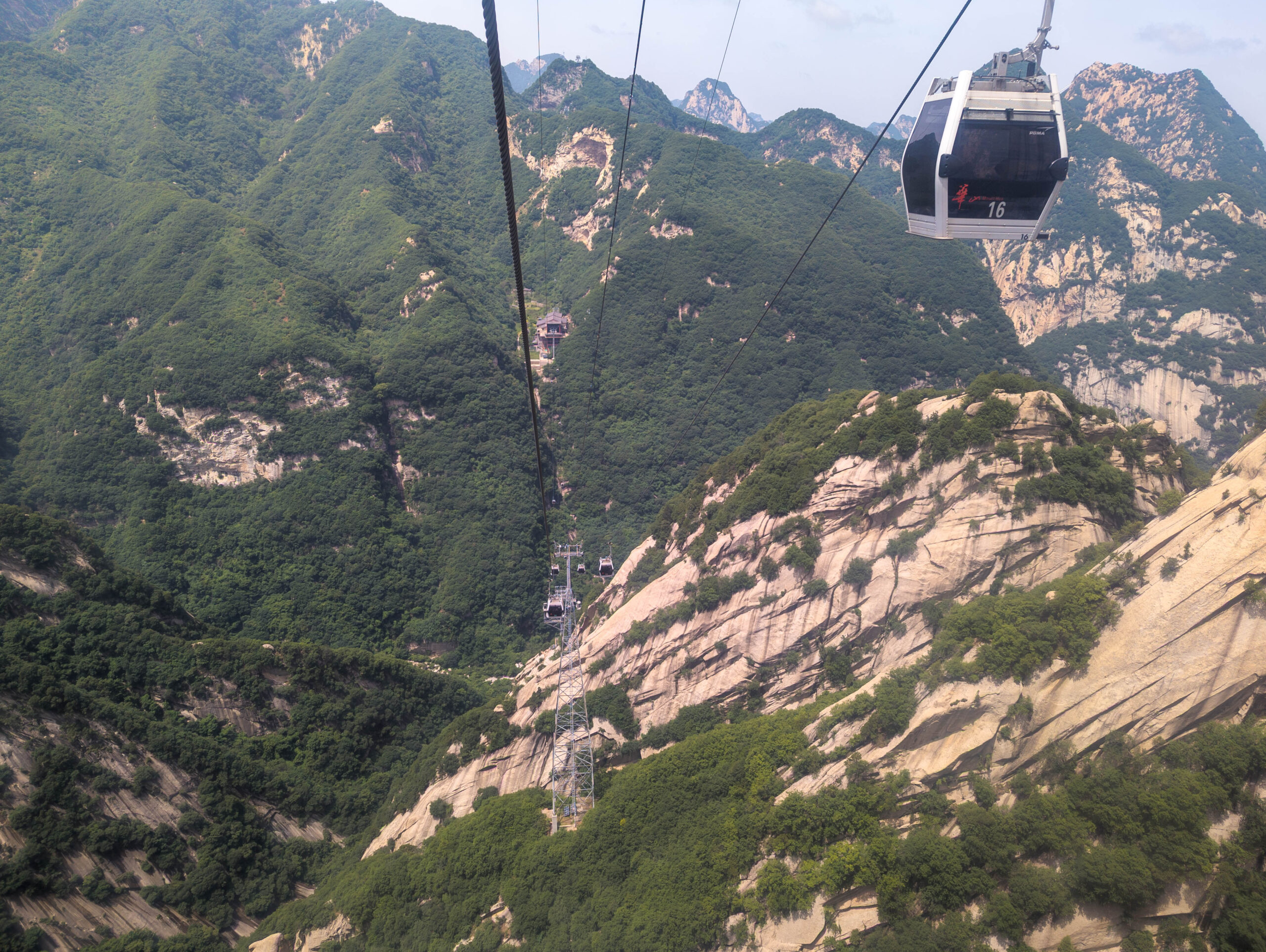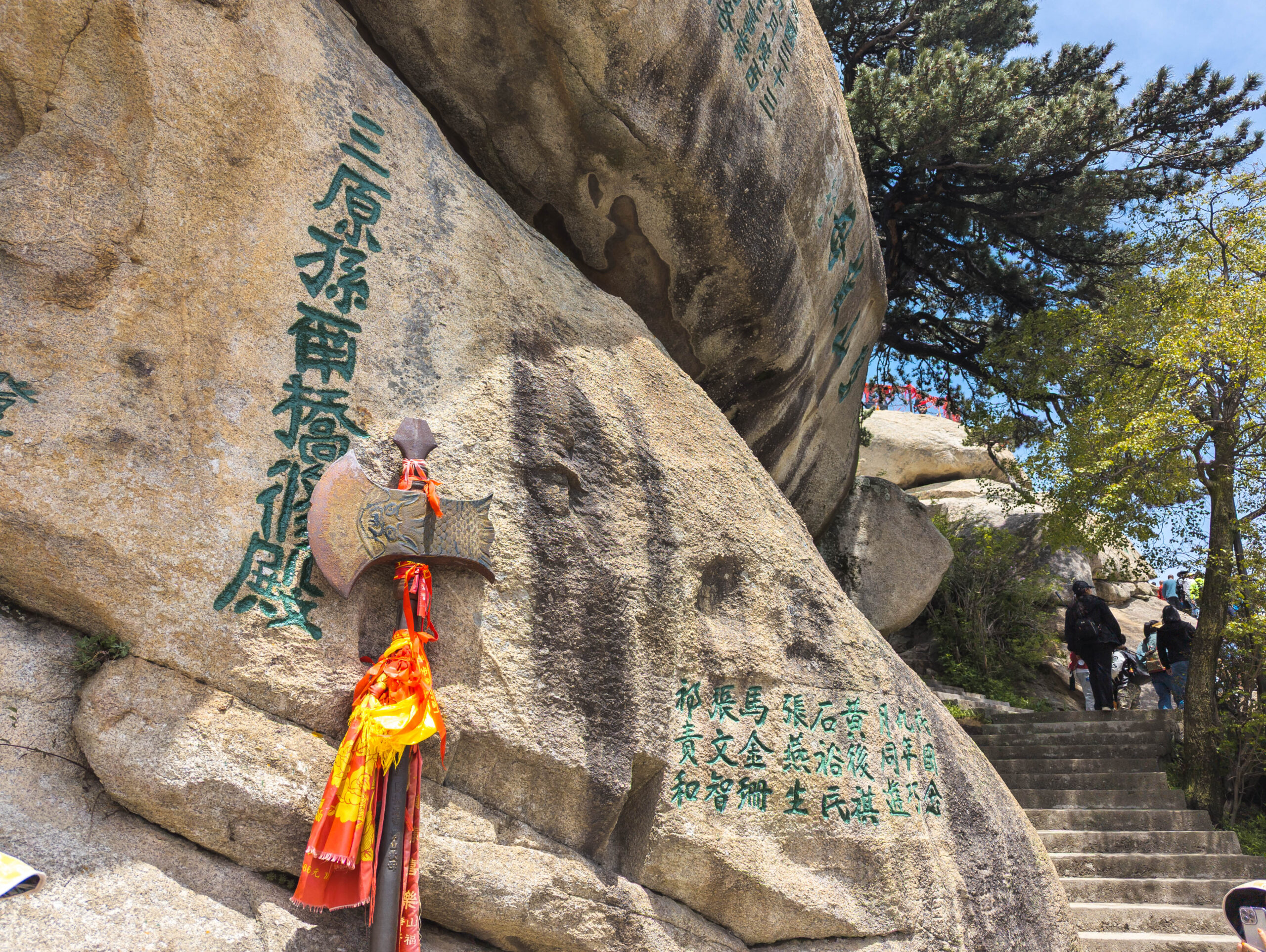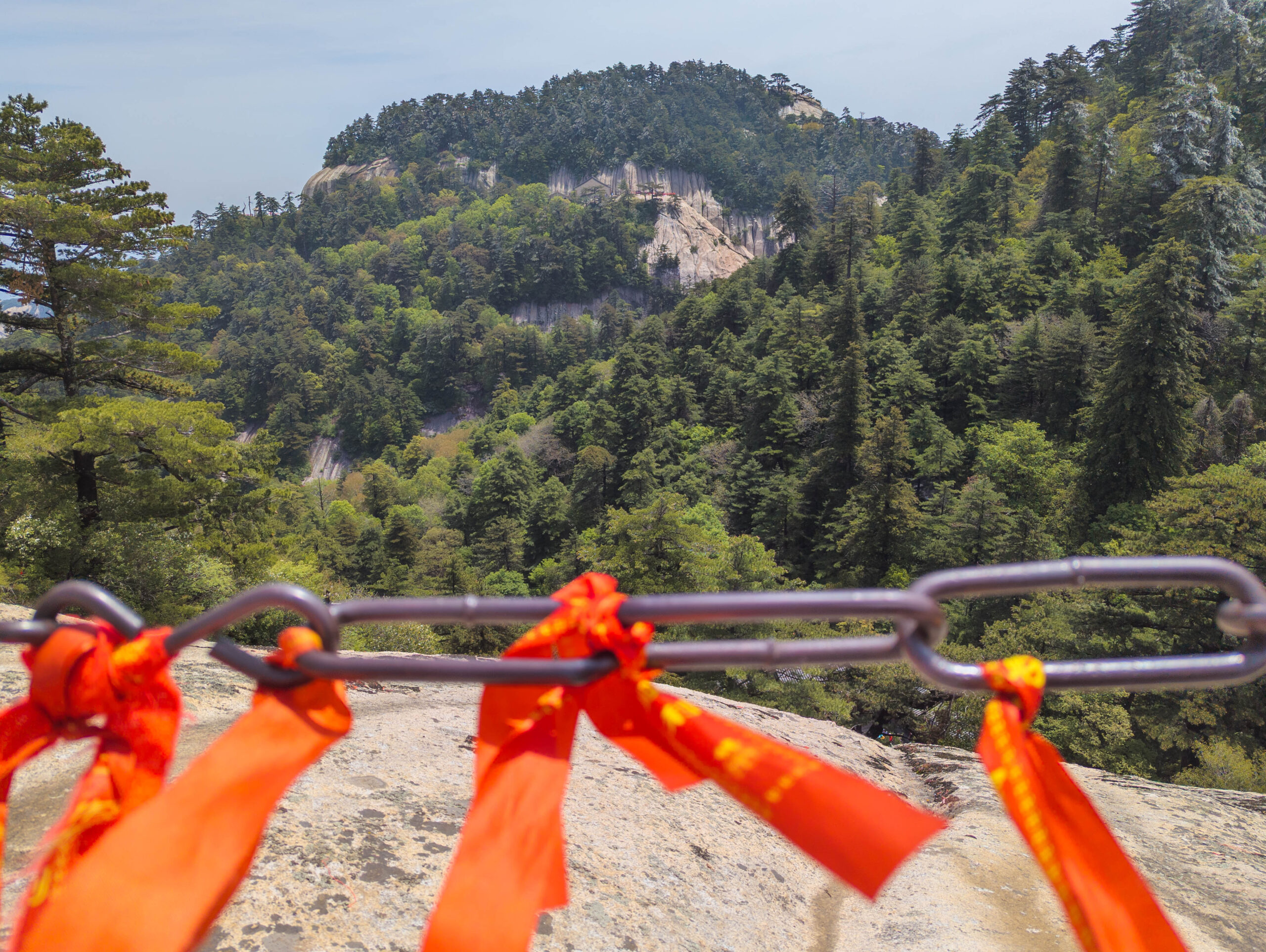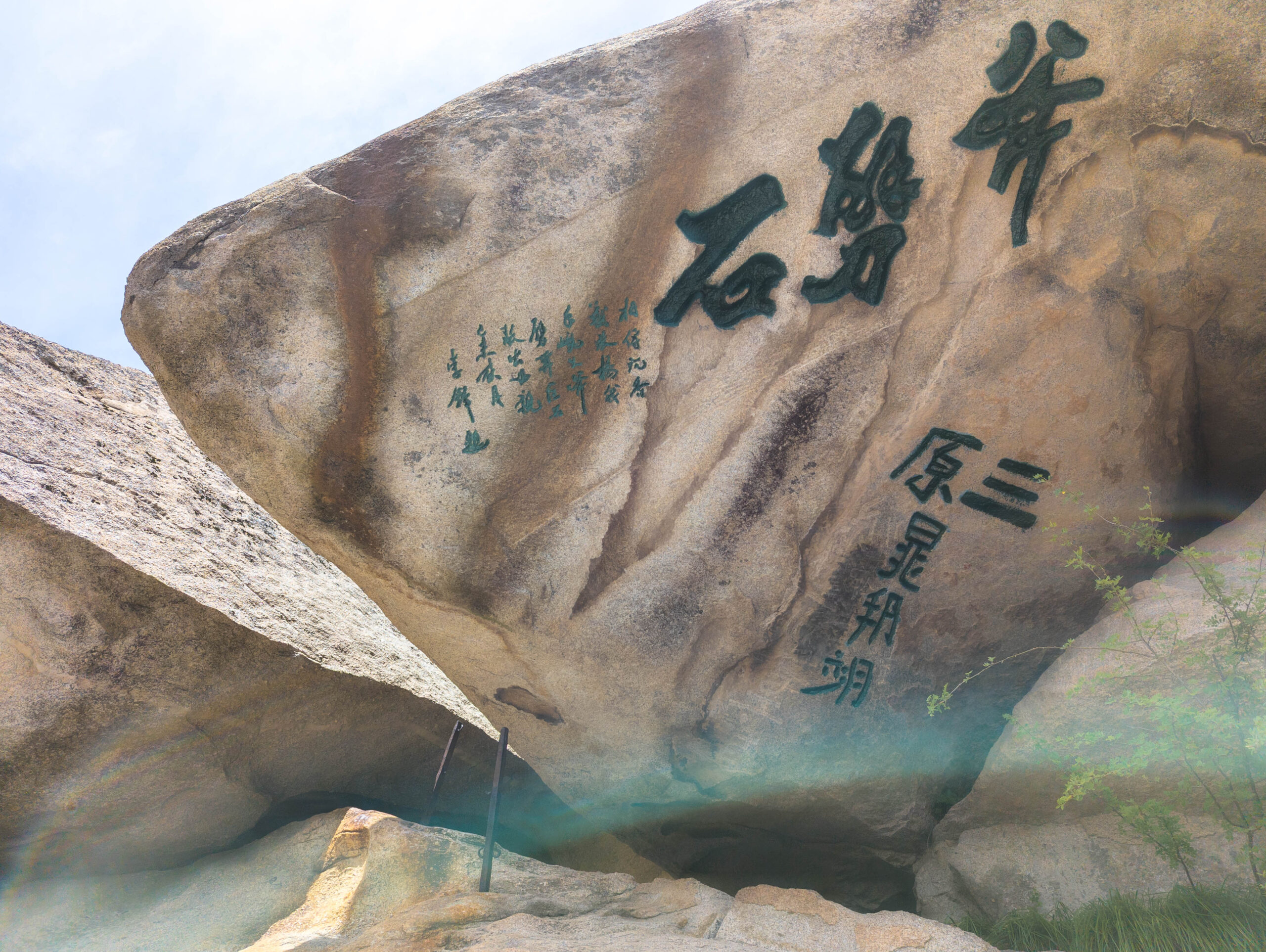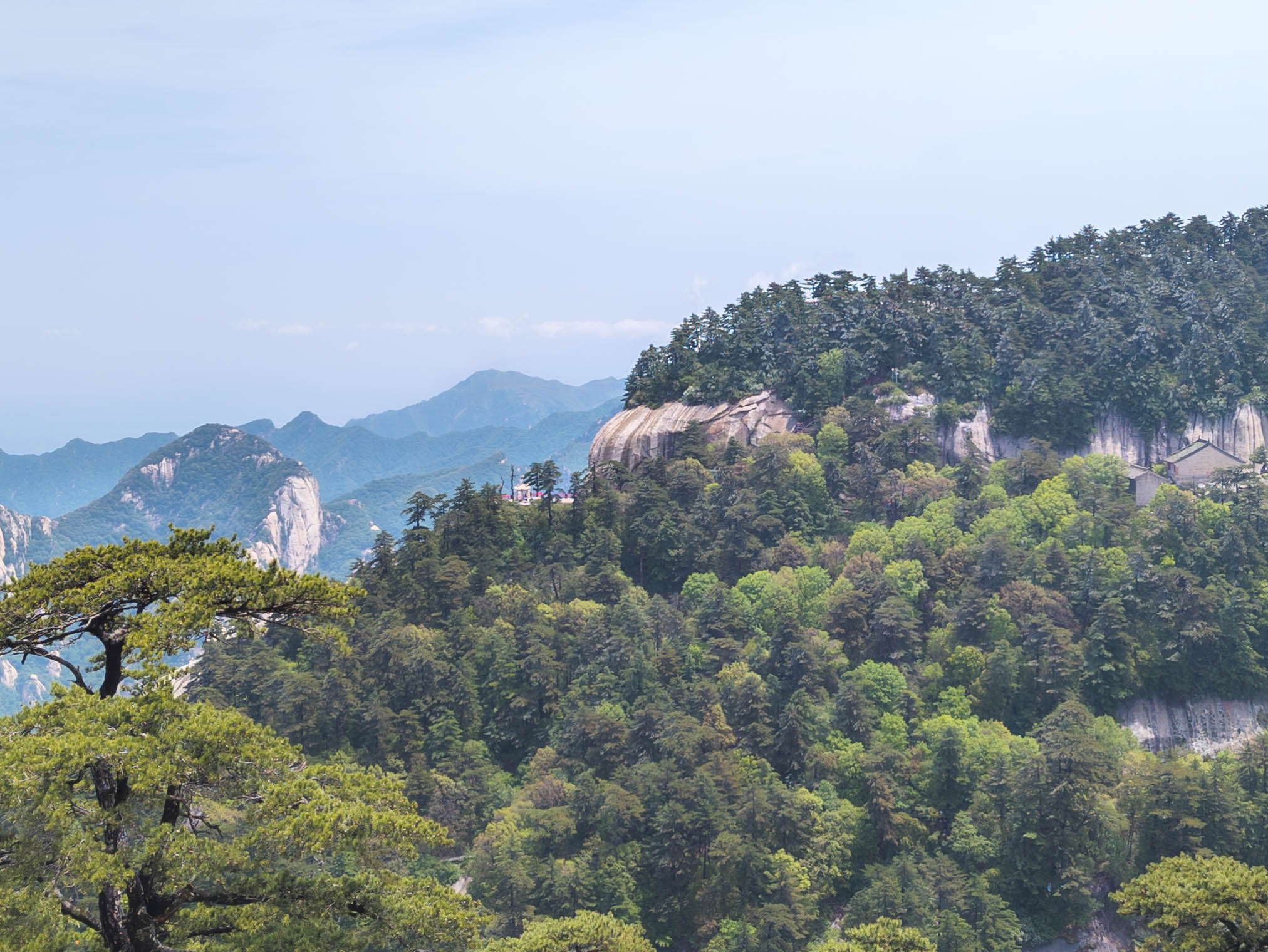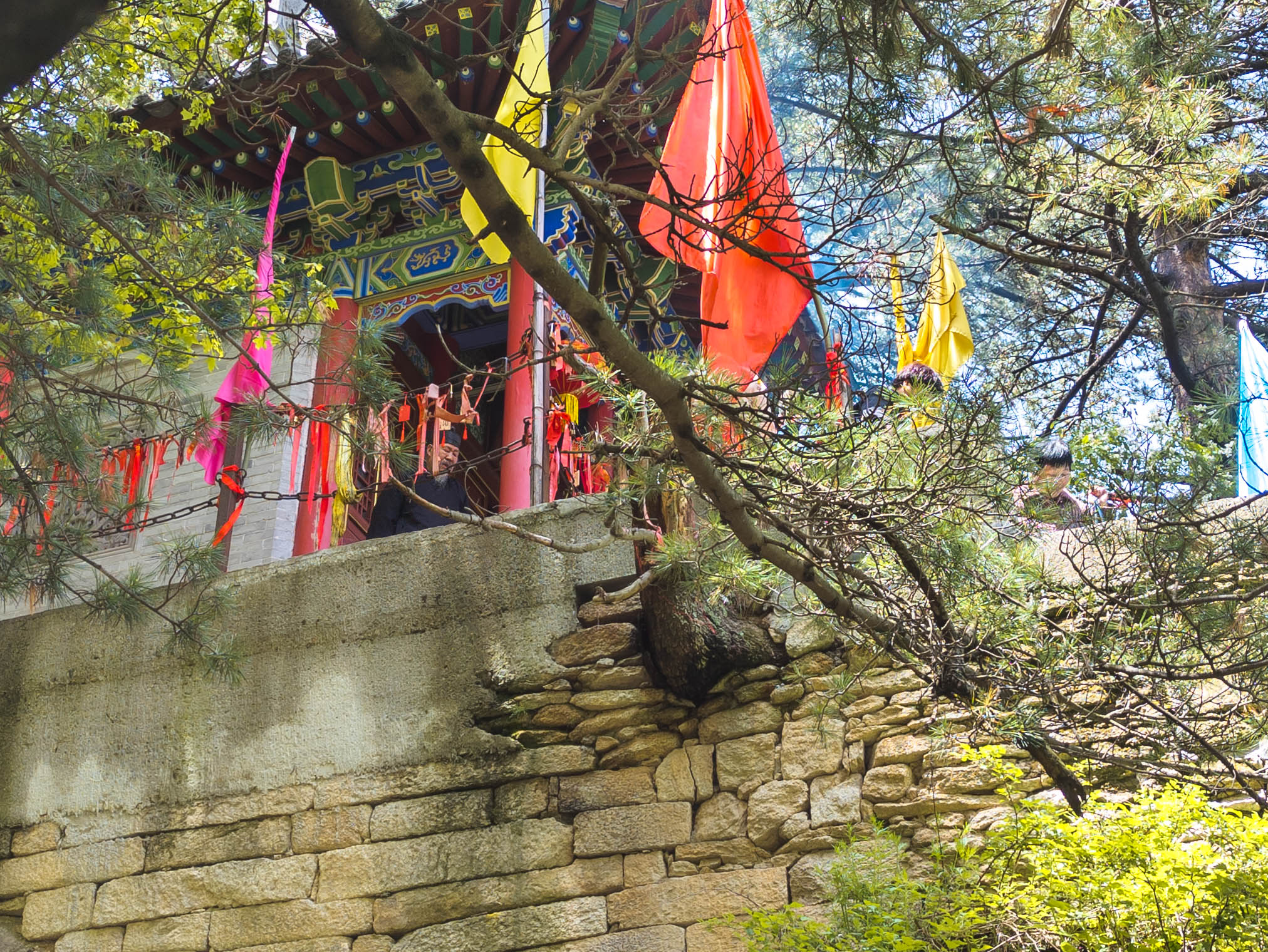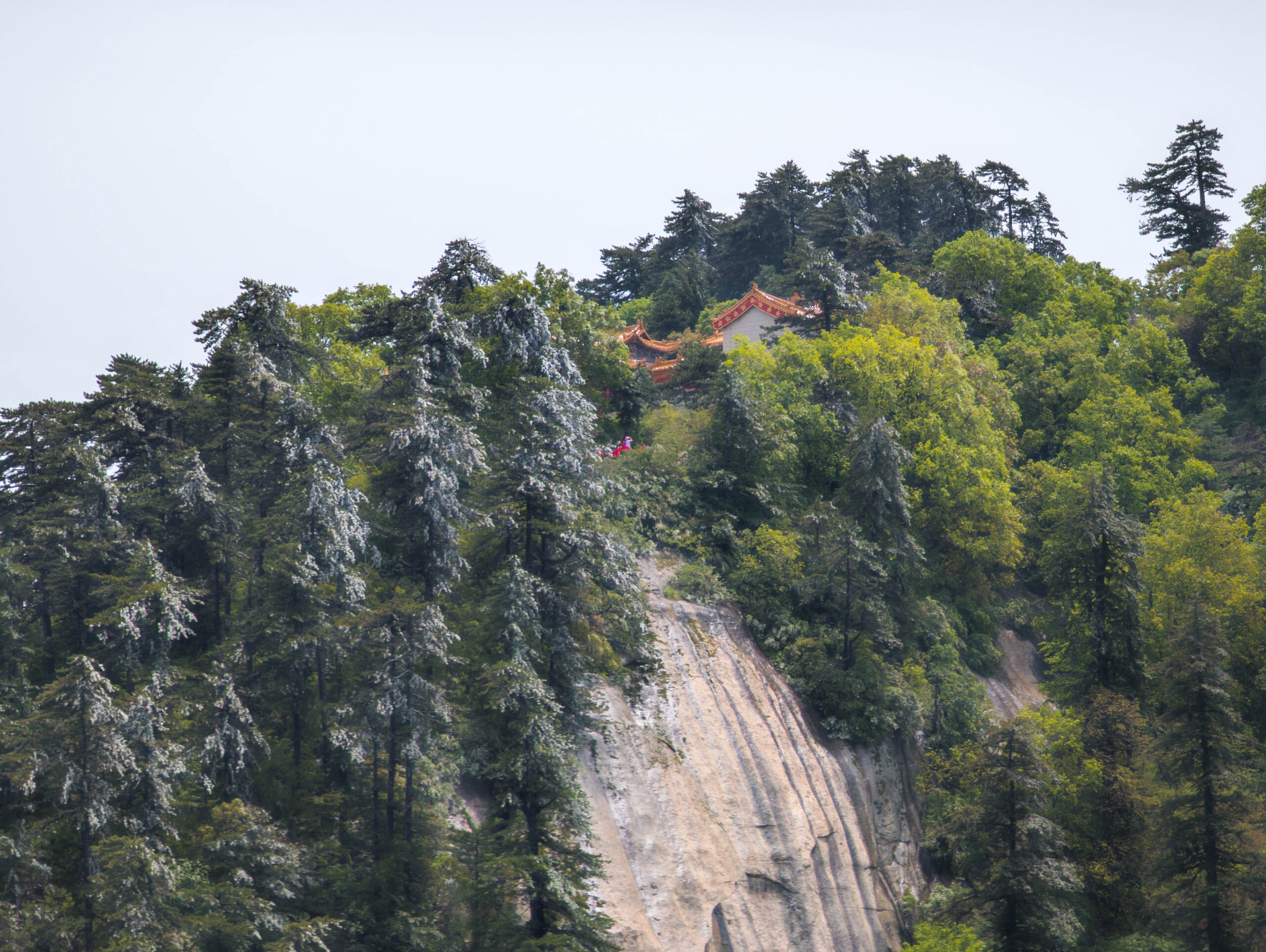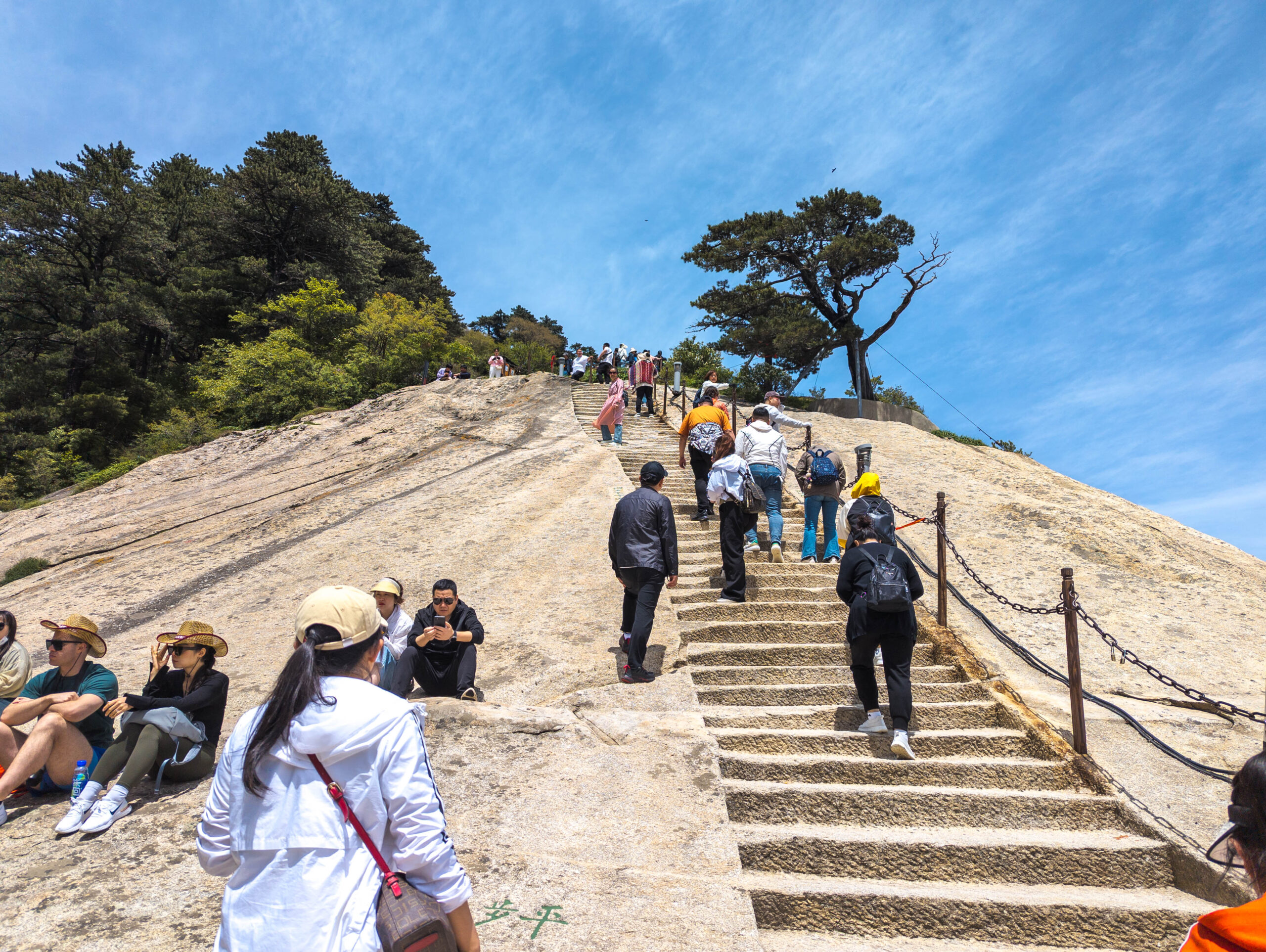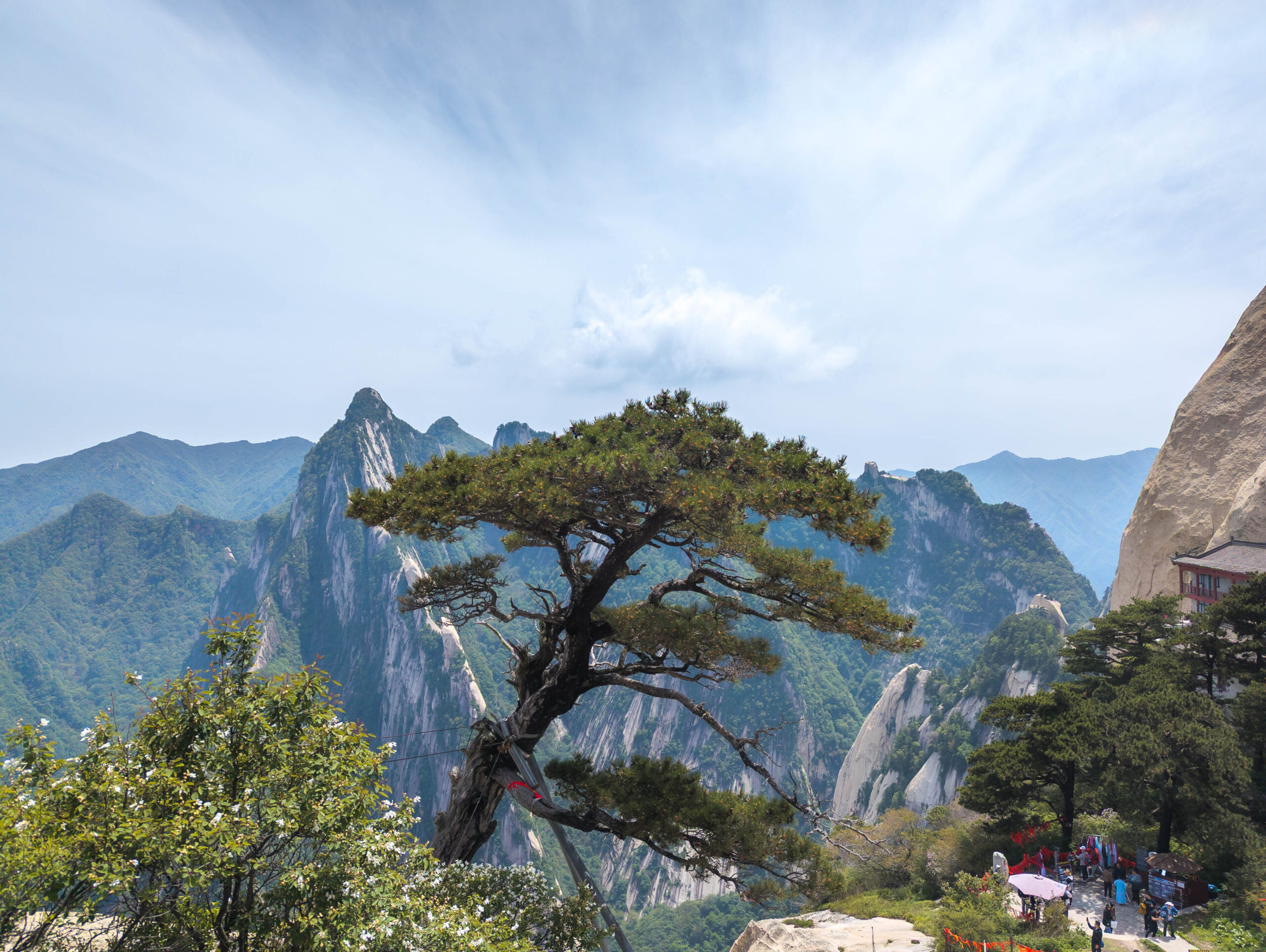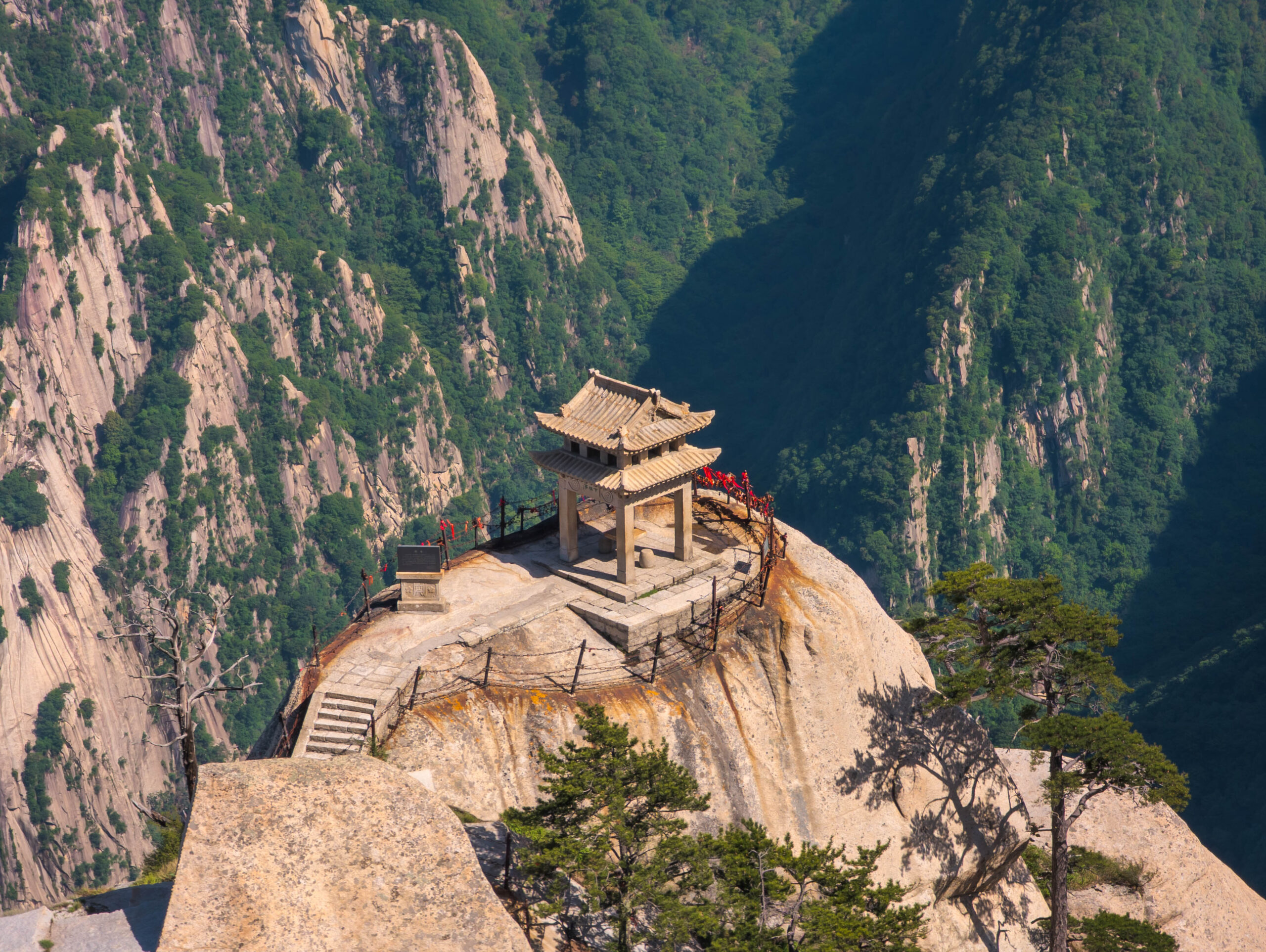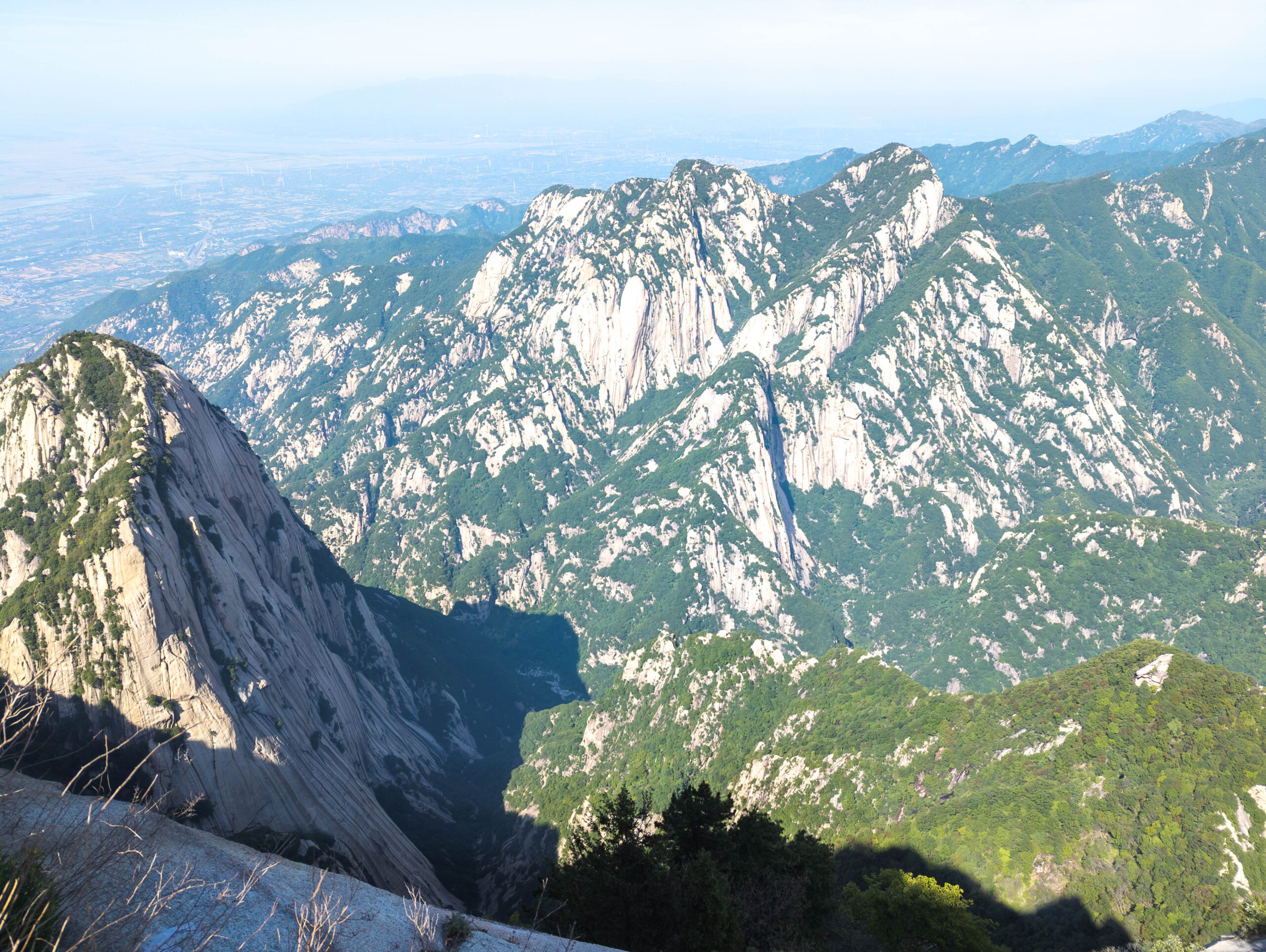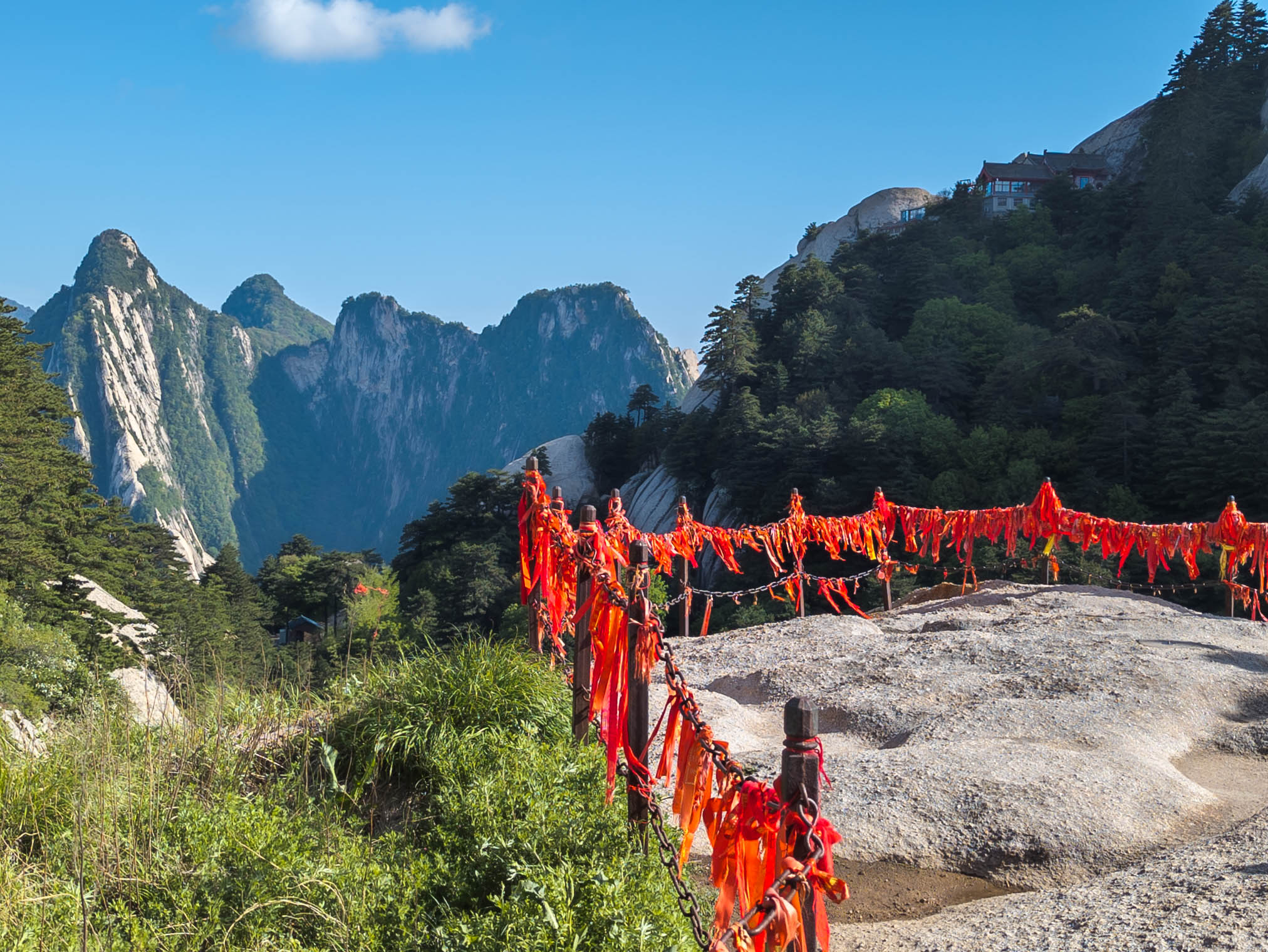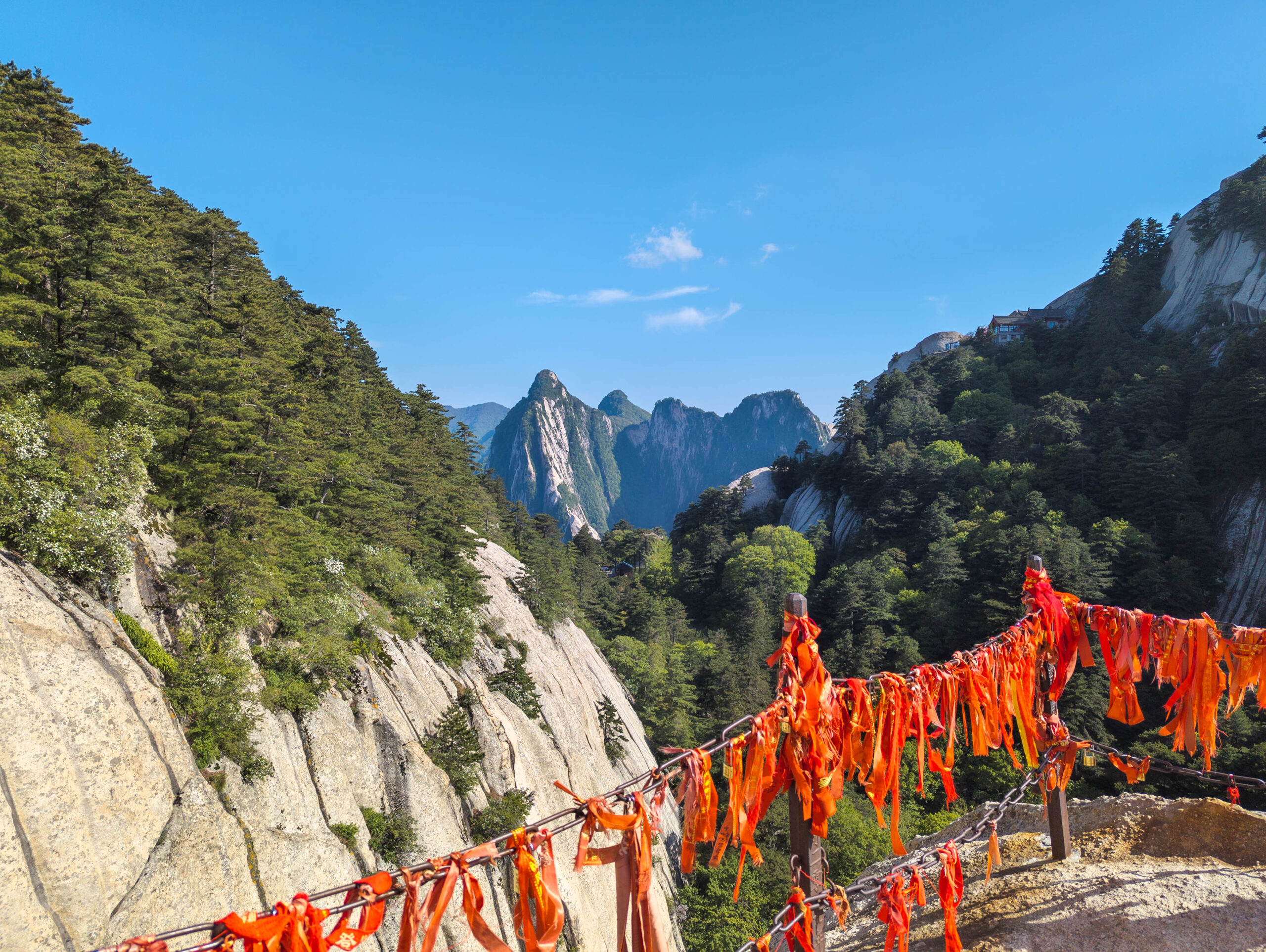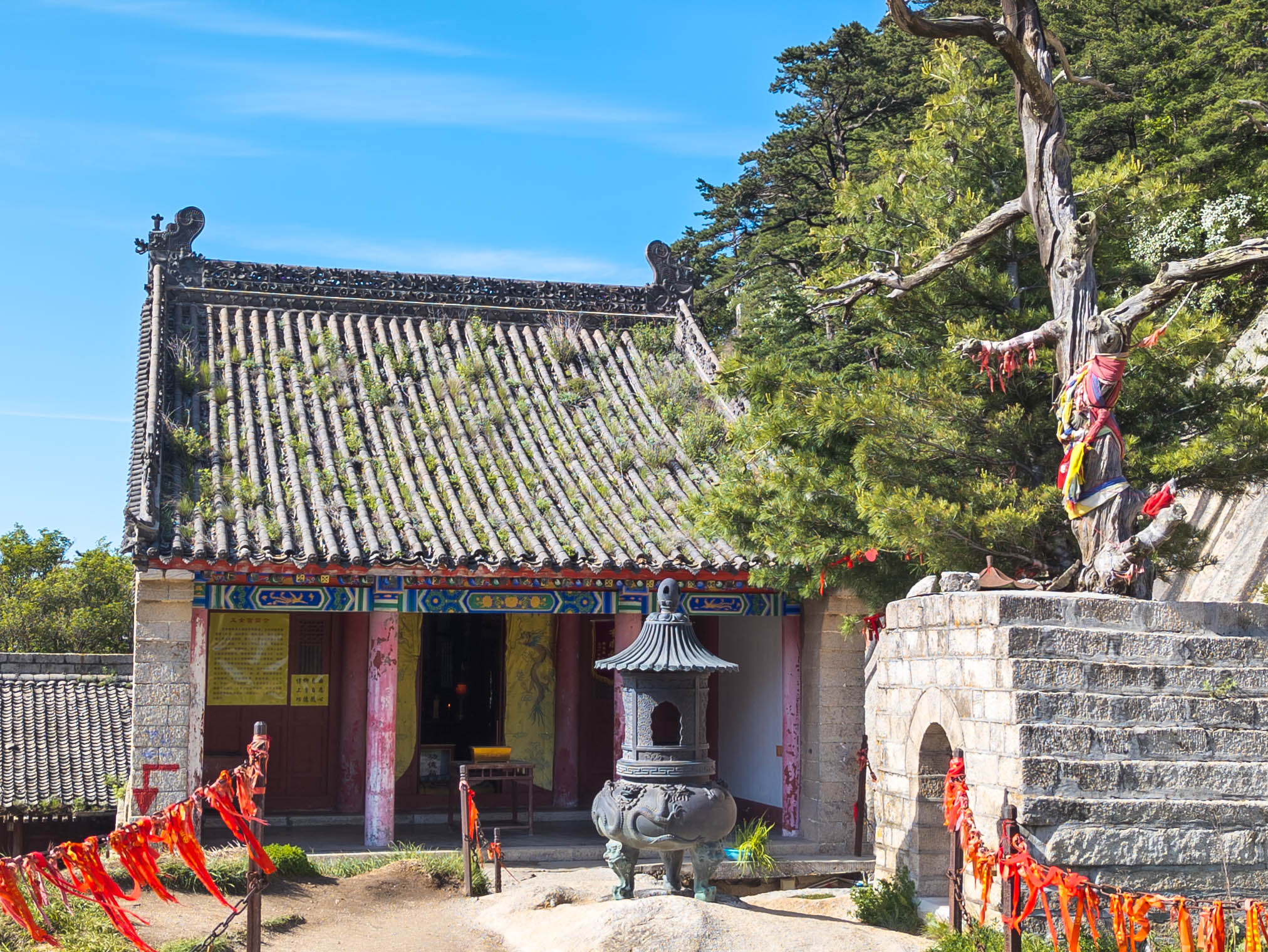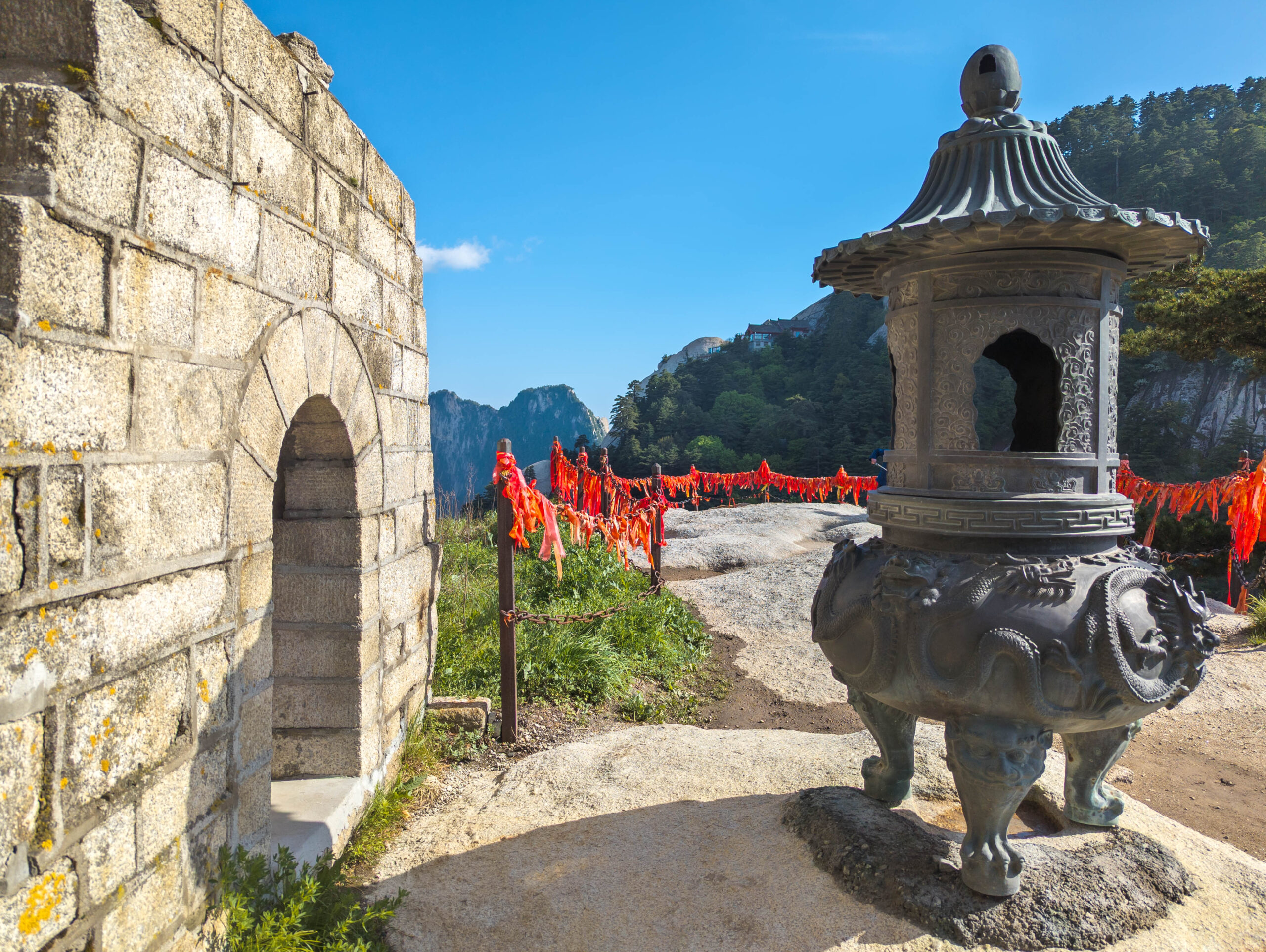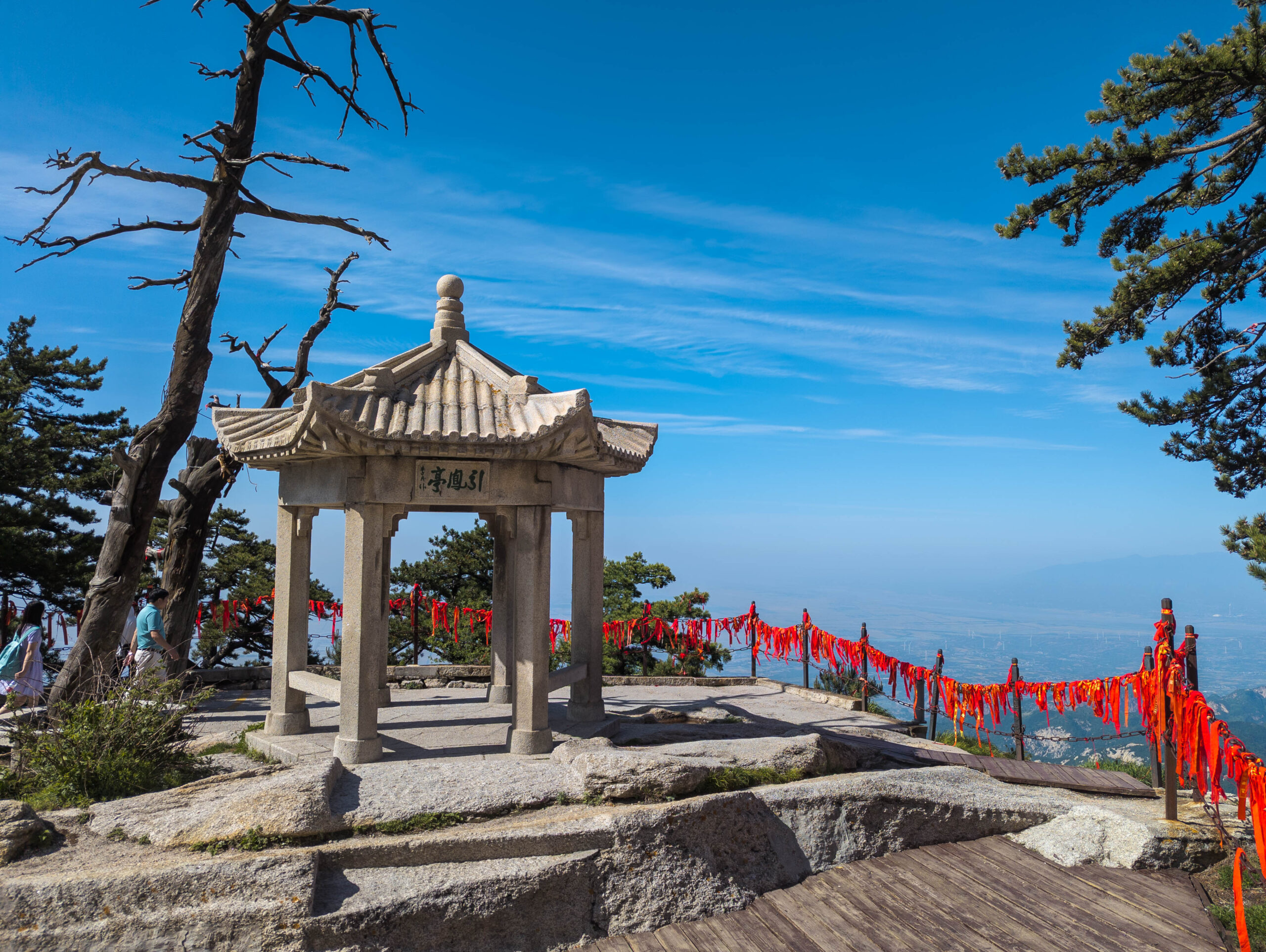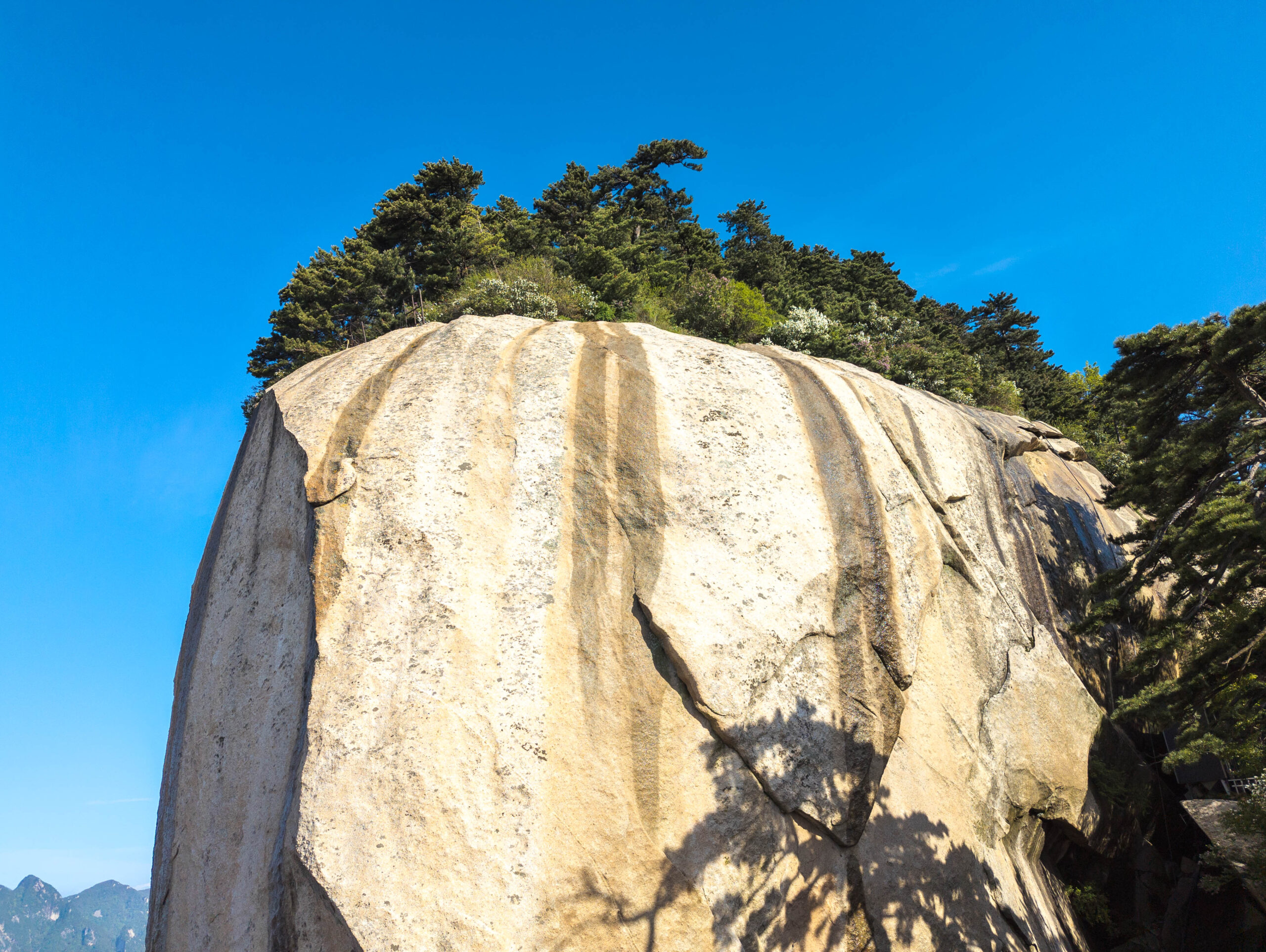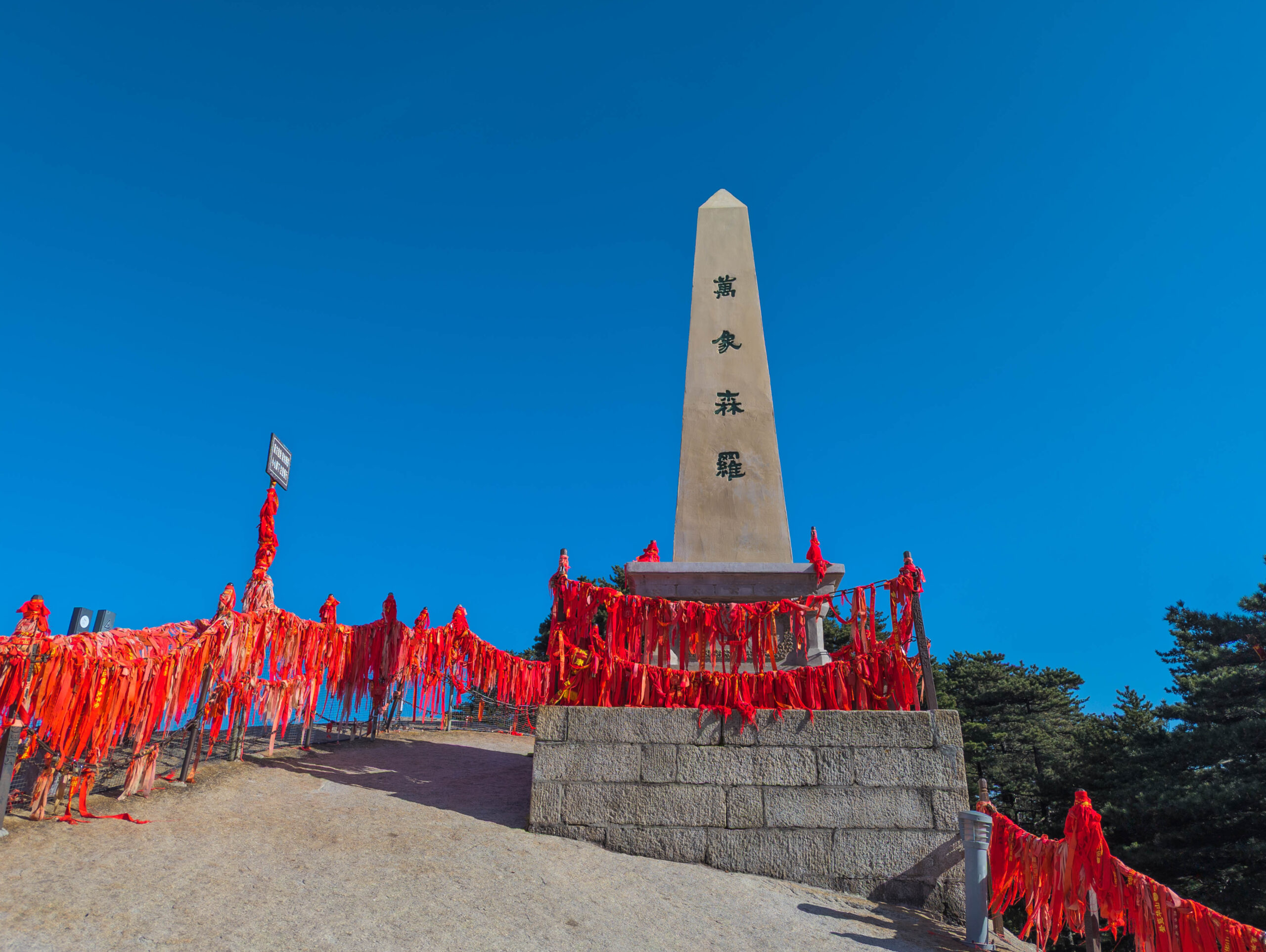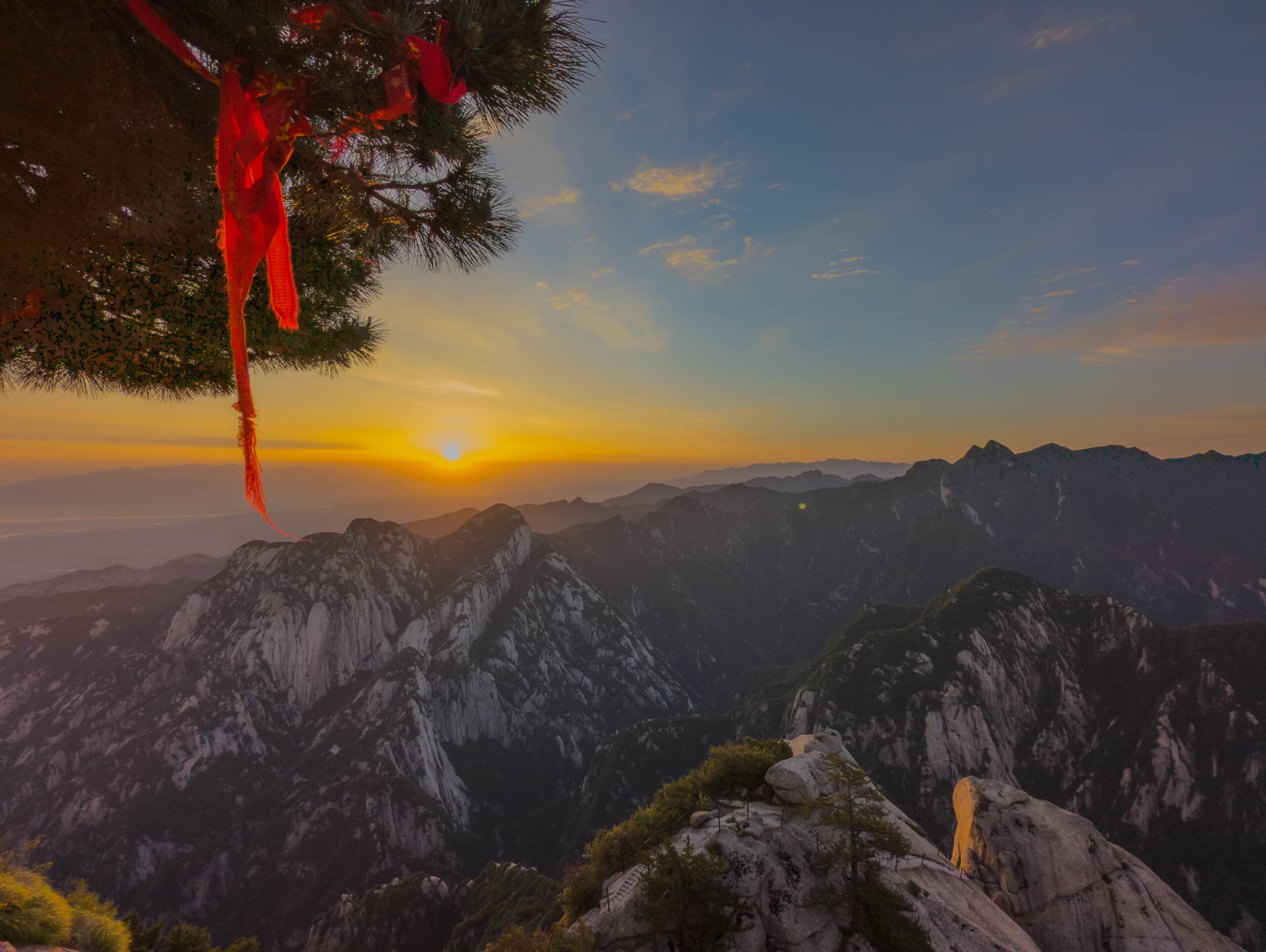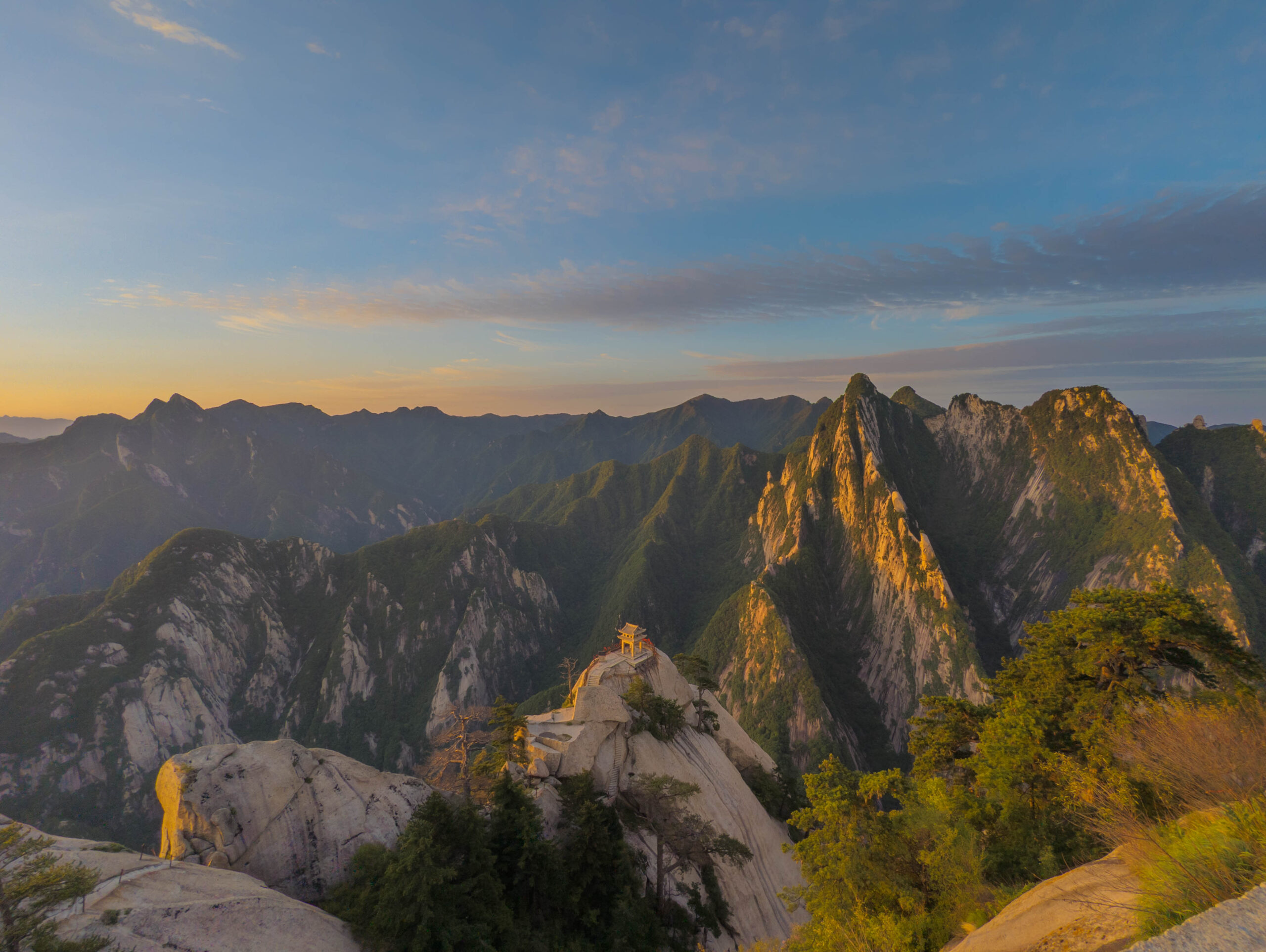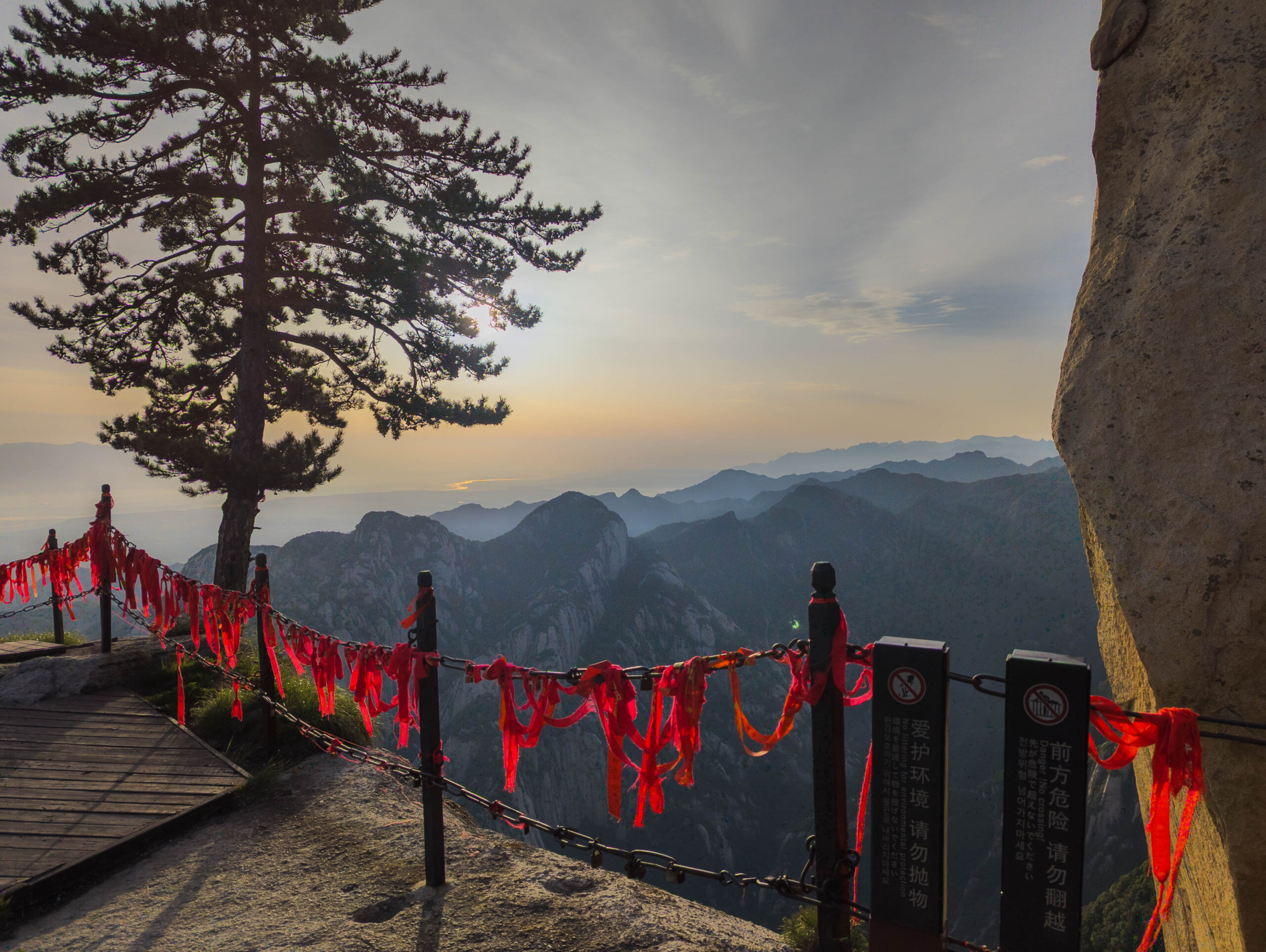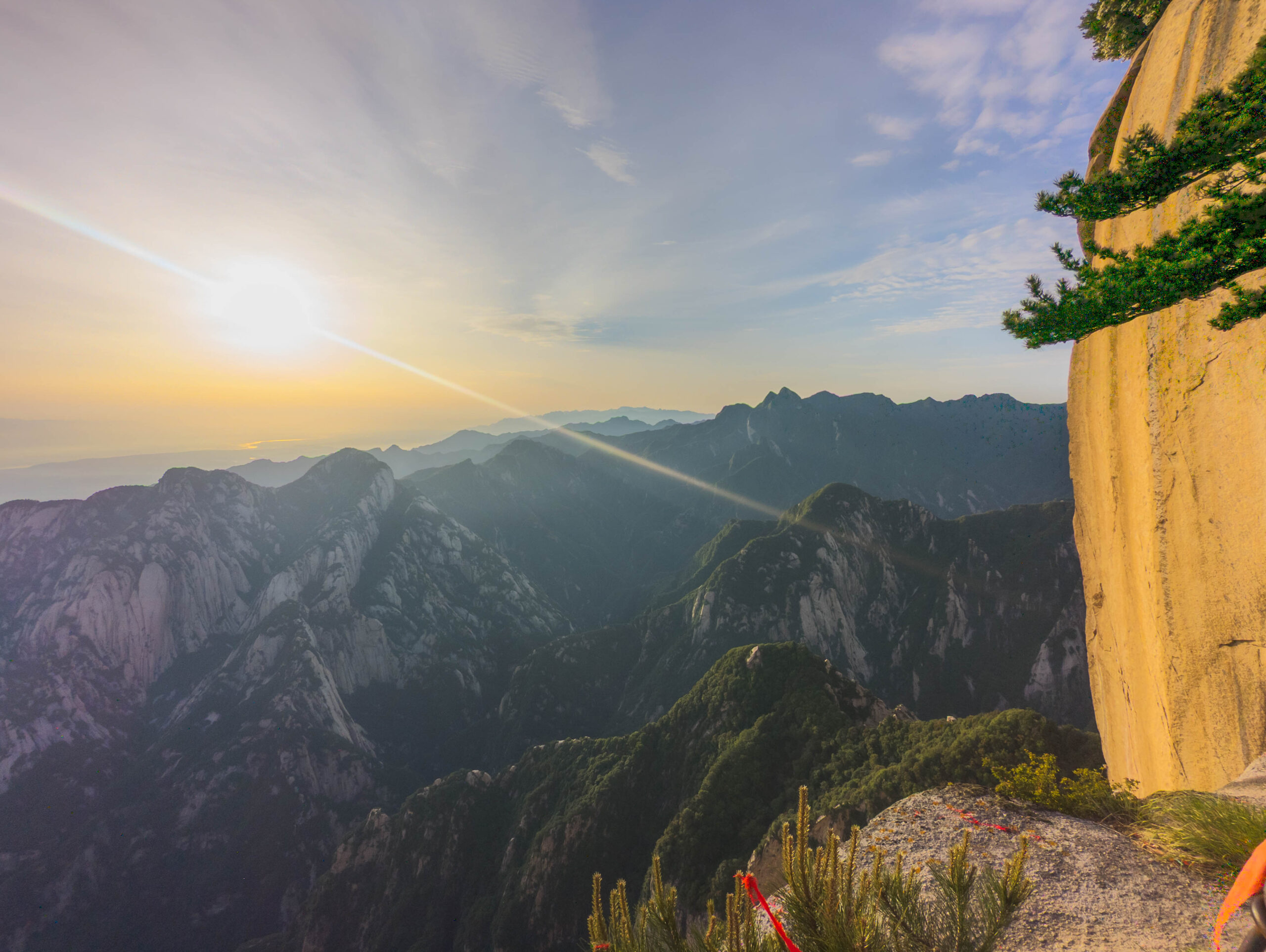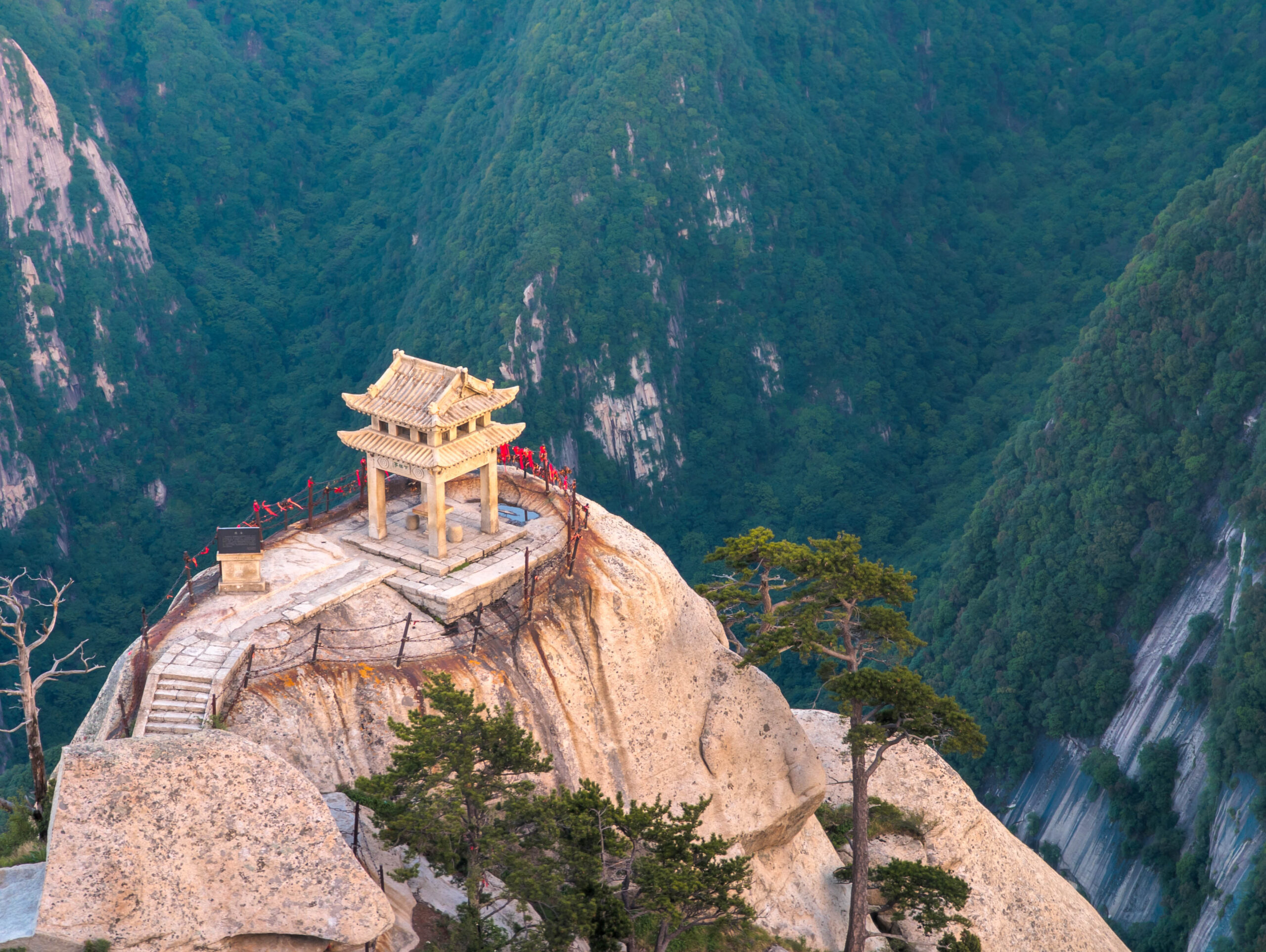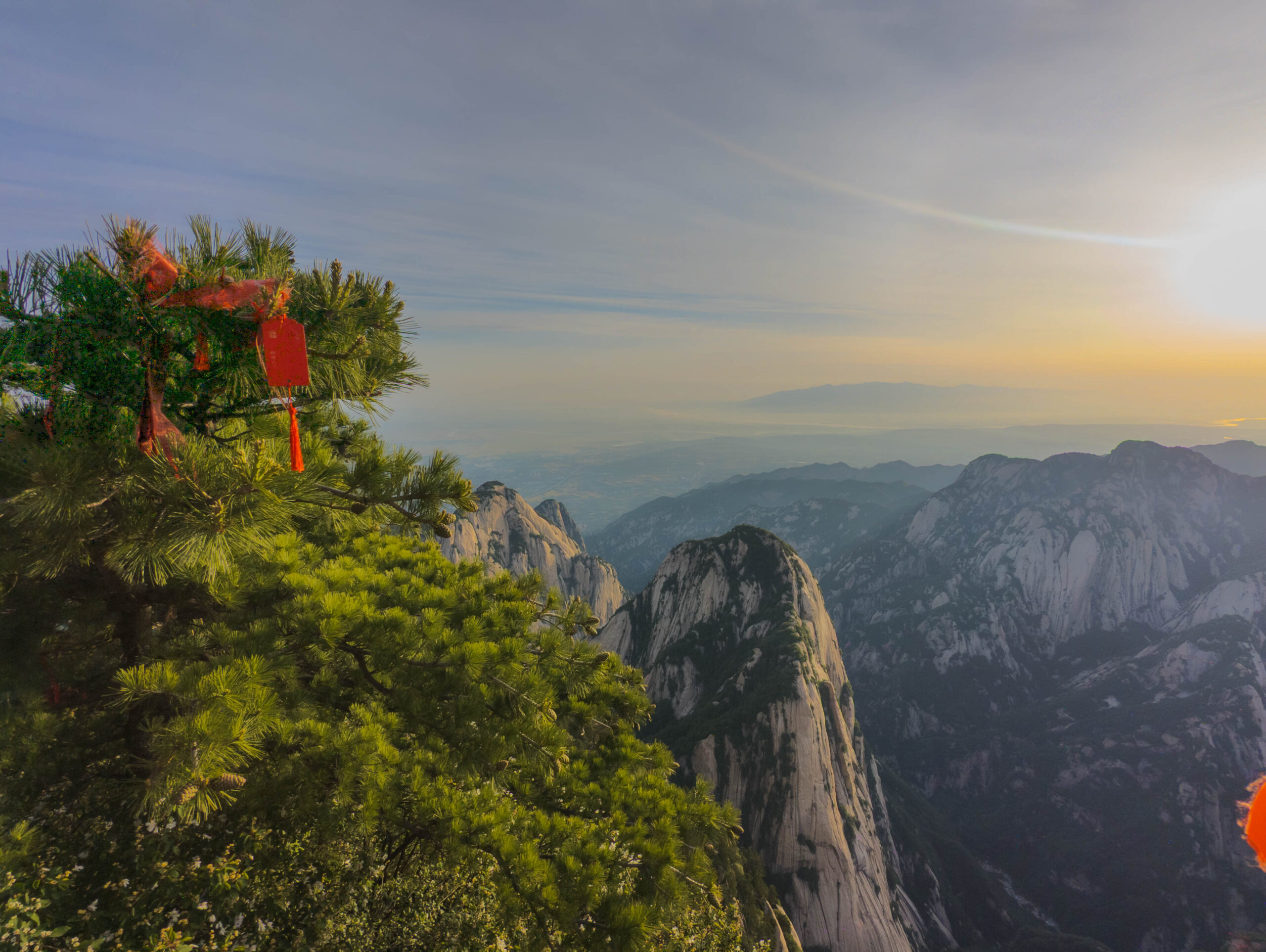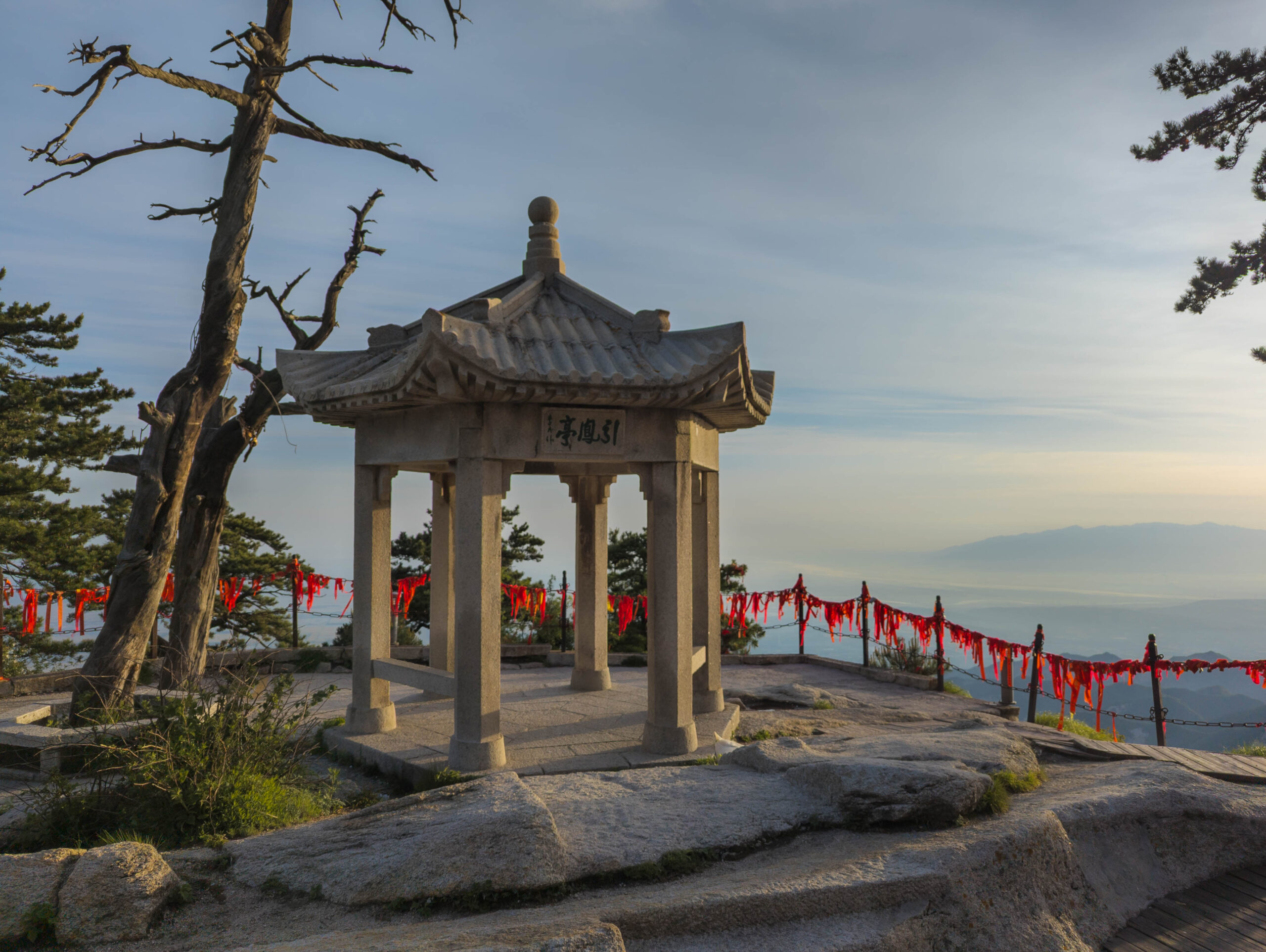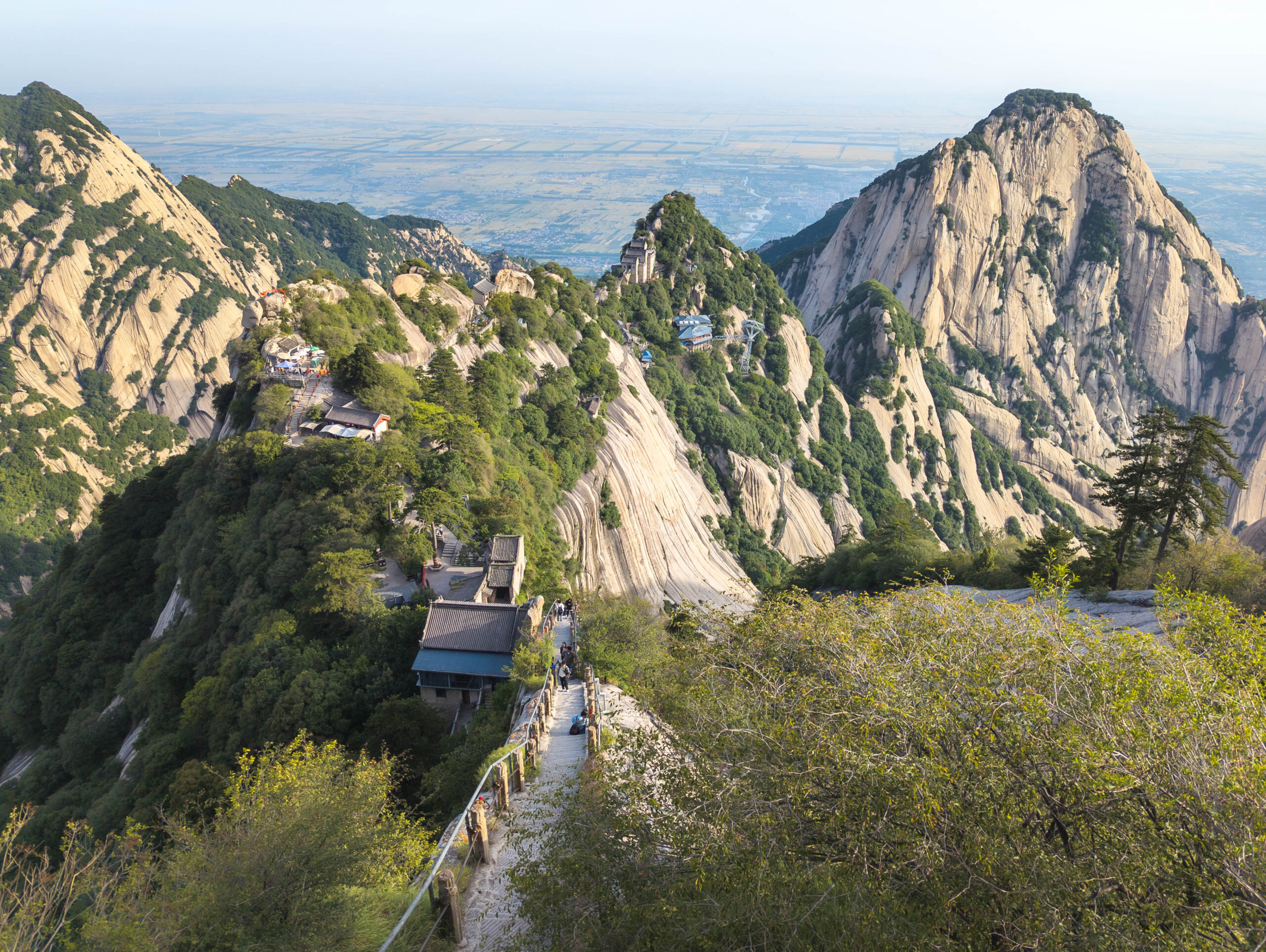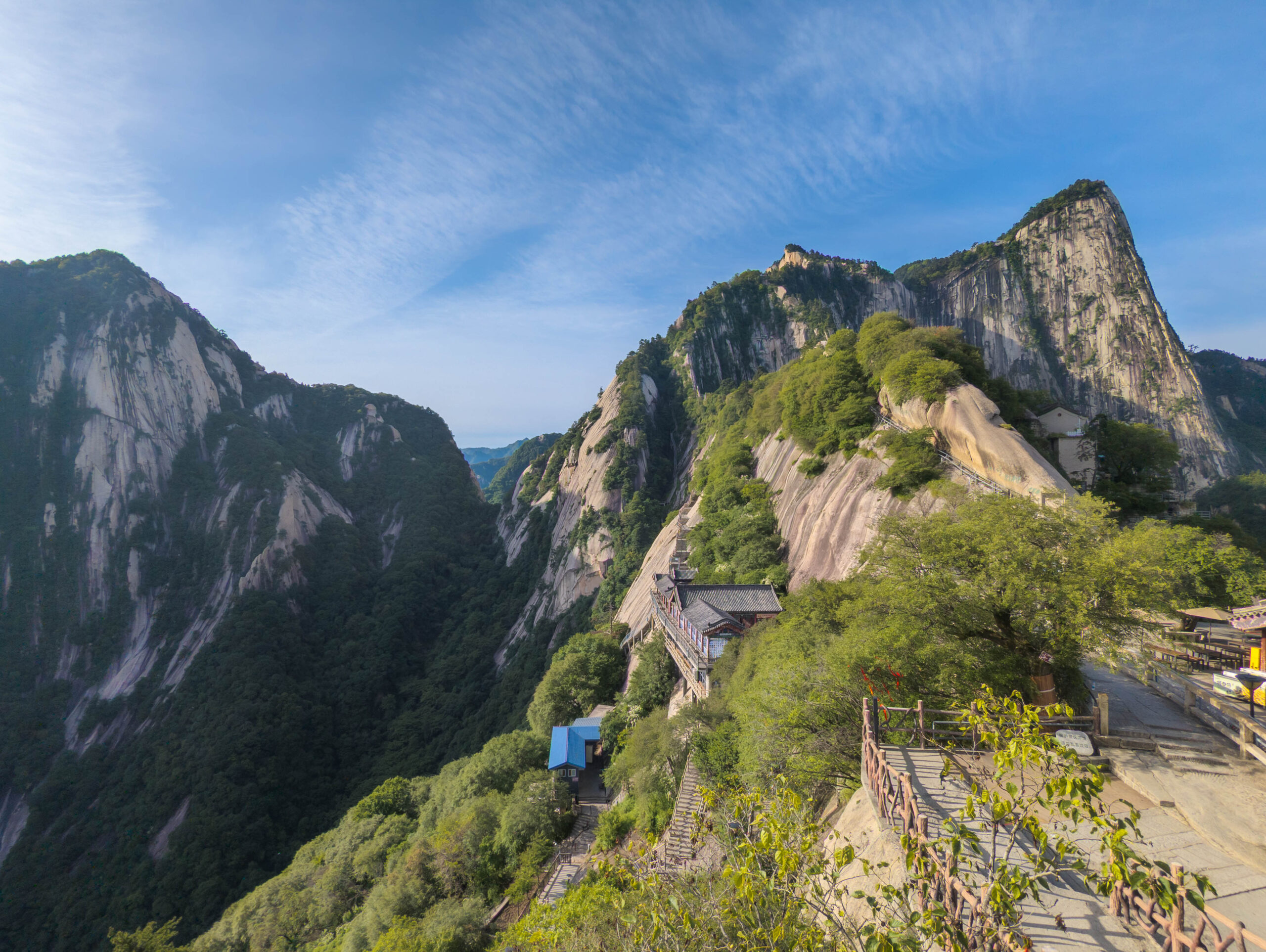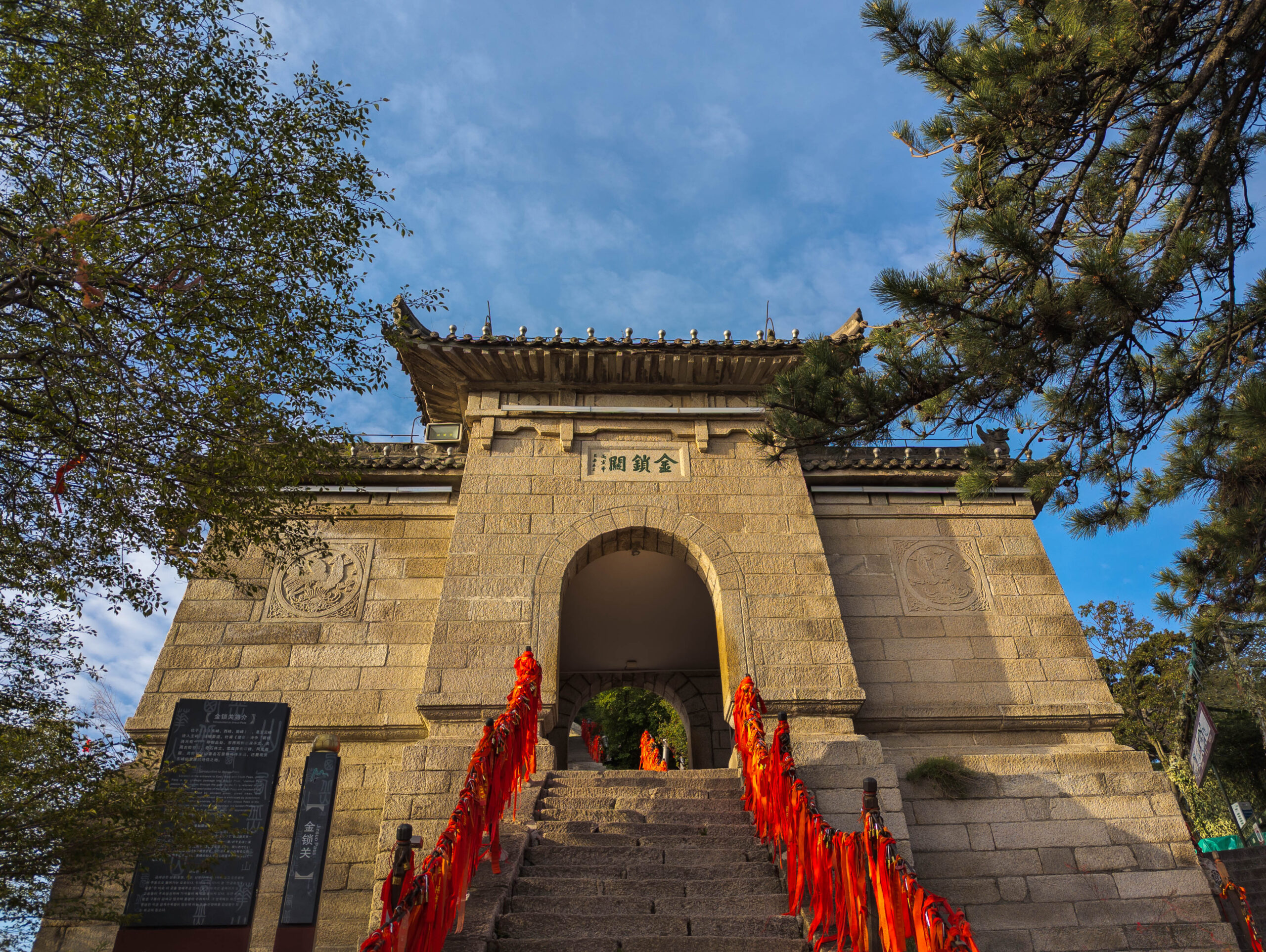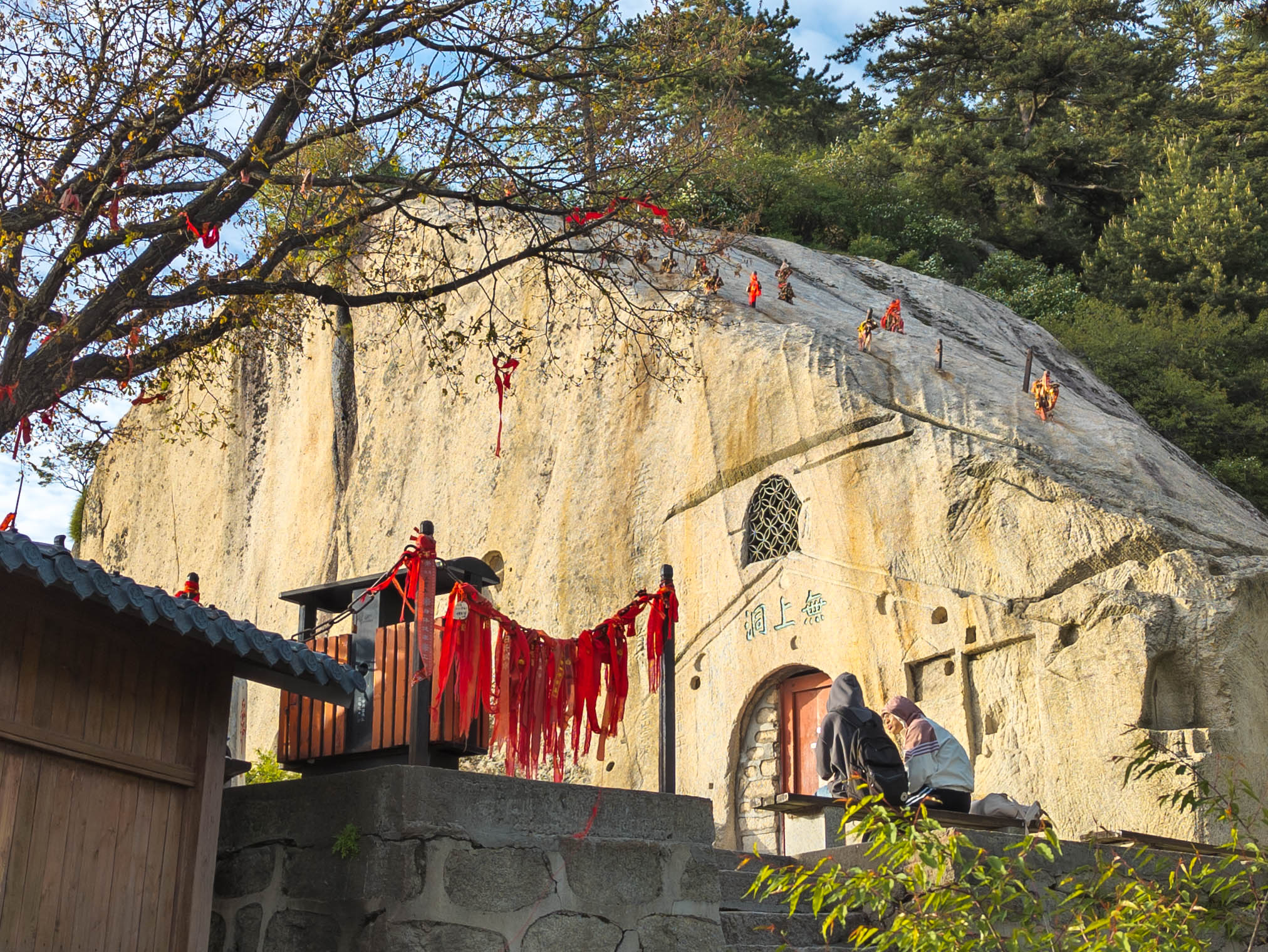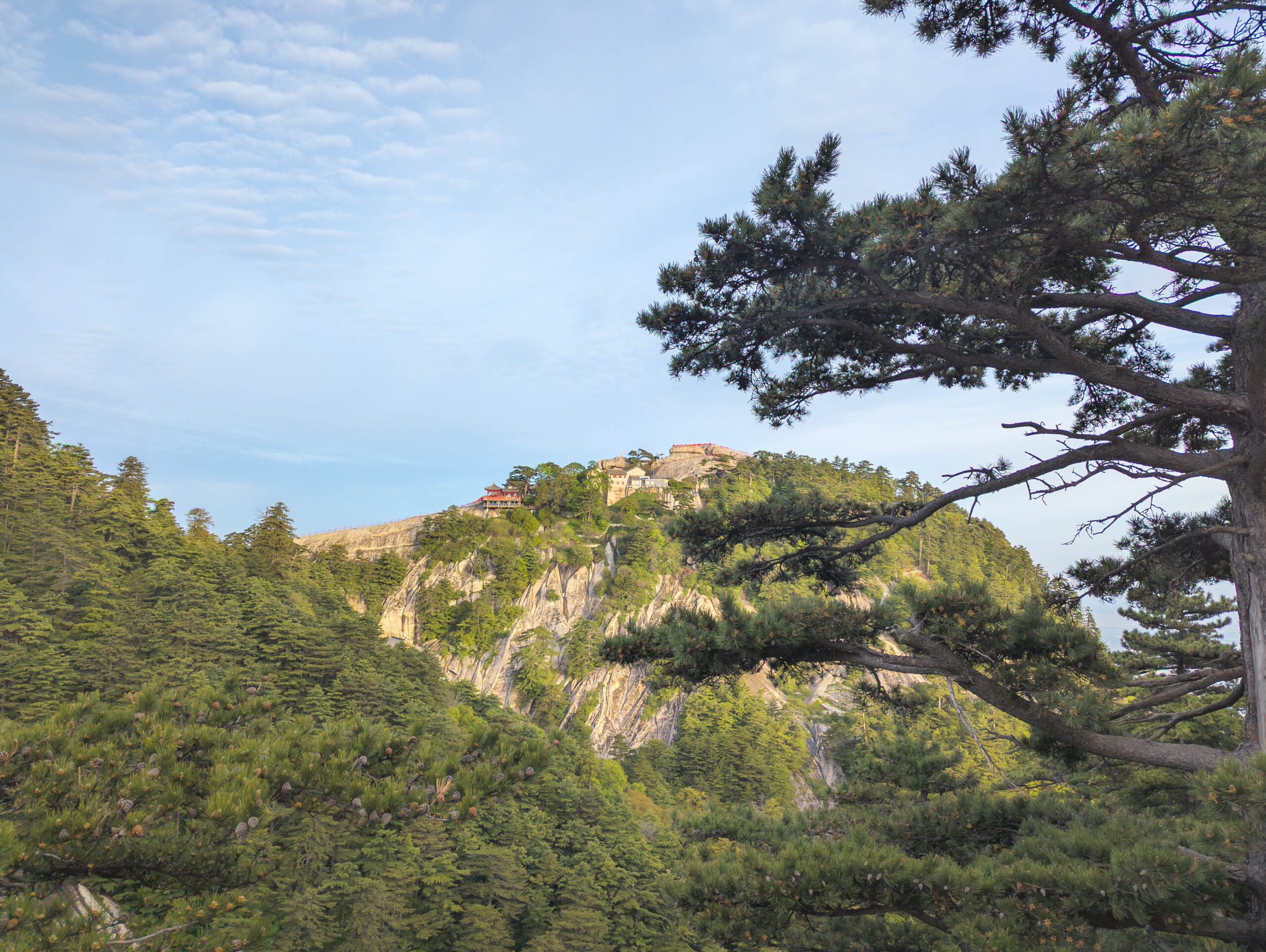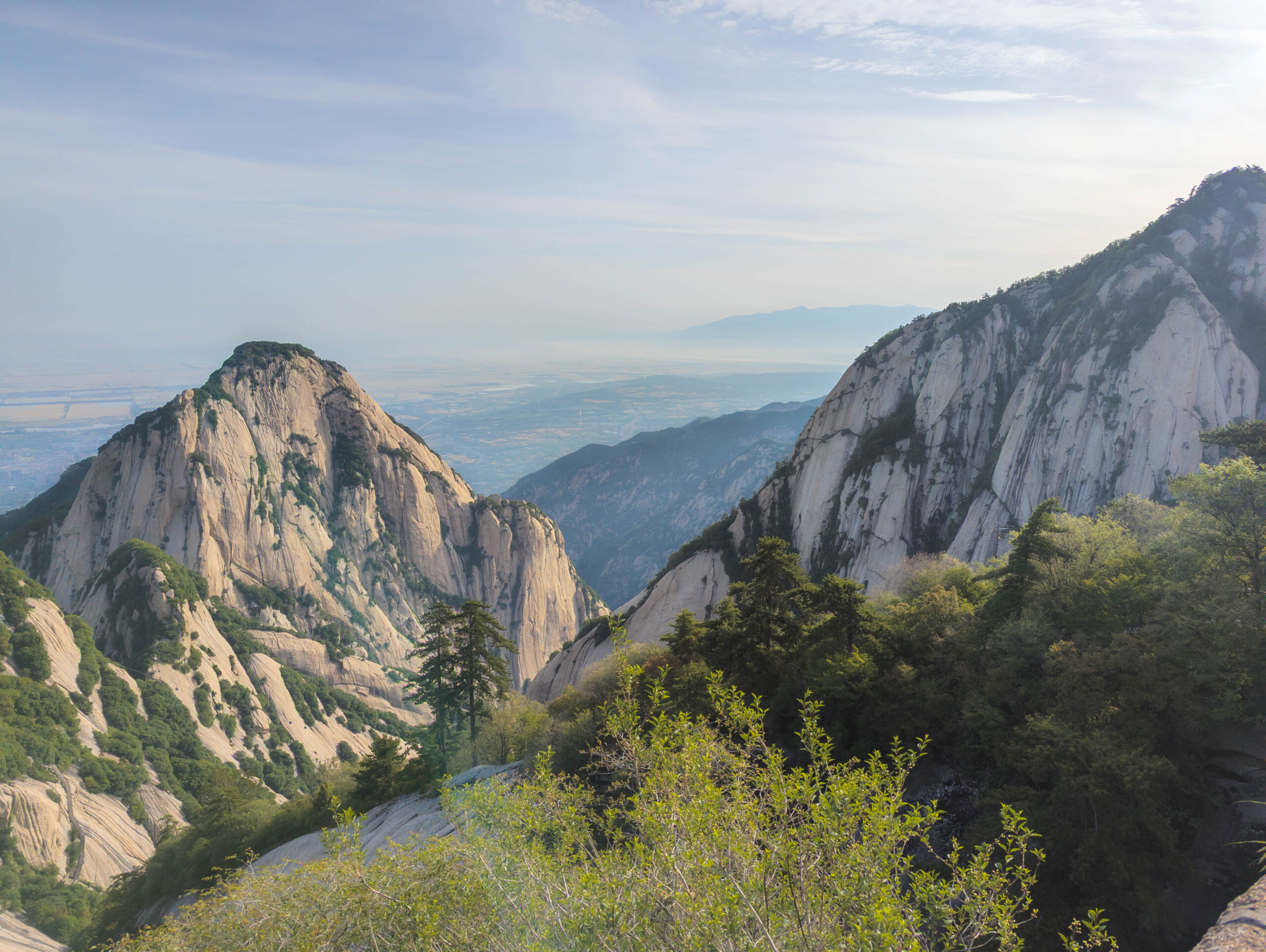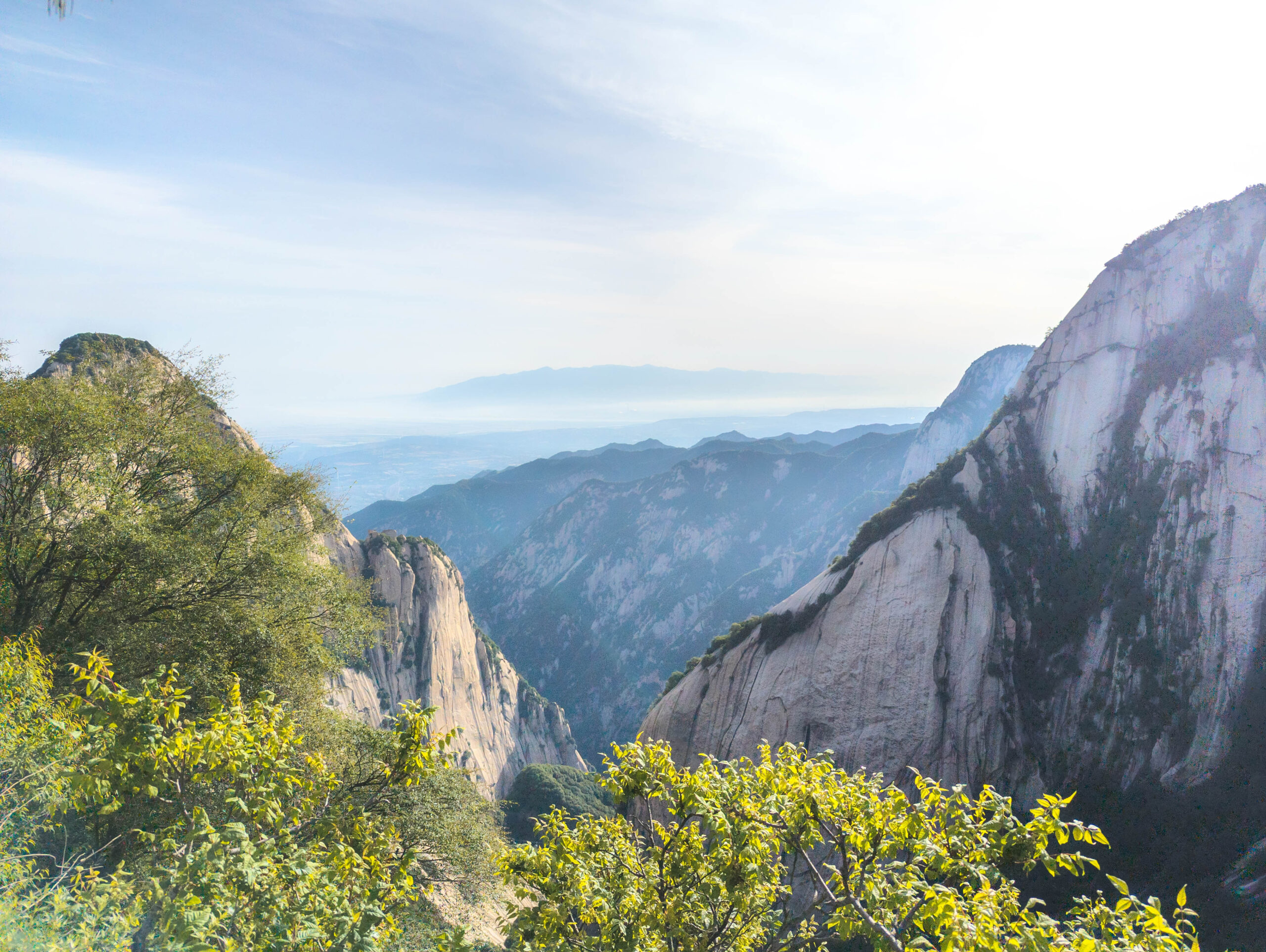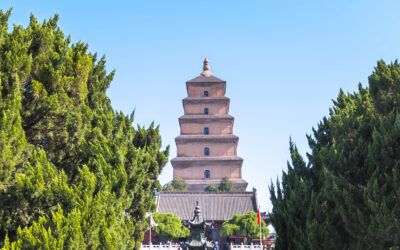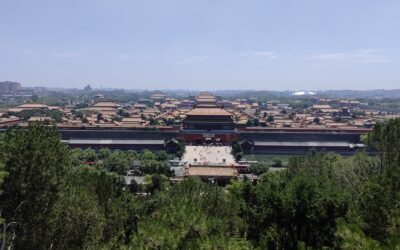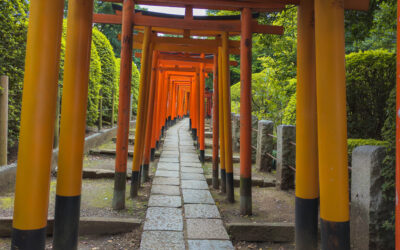Hua Shan
May, 2023Taoist Shrines and Sheer Drops
May, 2023
Even though I’d been told it was no longer necessary to visit the five sacred mountains of China, having been to Huang Shan, I knew I had to visit Hua Shan as soon as I saw photos of it. One of my students showed me some pictures of the sunrise over the Yellow River seen from this holy Taoist peak, and I was smitten.
It’s just one or two stops from Xi’an on the main train line heading east. The train stops at Huashanbei station, in Huayin, and there is a thriving industry of taxis waiting to take people to the entrance to the park.
For, like many attractions in China, it is a park: complete with thronging queues, people with loudhailers and little flags on poles, and gift shops. People talk about “climbing” Mount Hua, or hiking on it, as if it were K2 or something, but it’s not really like that. Cable cars take you up, and the paths on the mountain are well-maintained and wide. Most people there are what you might call civilians, rather than mountaineers.
I was there two times during my stay: once during a lull in covid. The second time was after the government in their great wisdom had decreed covid was no longer a thing to worry about, but too soon after for most people to have got the memo. As such, it wasn’t too busy. The cable cars stop relatively early in the day, so if you’re planning on staying at the top (and you should) then you’ll have acres of space to yourself once the crowds have thinned out.
HThe mountain looks glorious from the ground: part of the long ridge of mountains that divides China in half along its central axis. Putting it rather crudely, the northern half is drier, and tends to eat noodles, the southern half more tropical and more likely to be found eating rice. Xi’an is found on the northern side of this range (Qinling).
Up close, the scenery gets better: sinuous yellow rocks twist and ascend, creating steep cliffs with dramatic sheer drops. Each outcrop is topped with green forest.
Hua Shan has five peaks, and looks like a lotus flower, an auspicious symbol. This shape is intertwined with its history as a sacred site: the peaks are sprinkled with Taoist shrines and caves that were used by sages as tranquil places for meditation amid the bird song and the sound of the wind in the branches.
The cable car, as mentions, arrives on West Peak, which after a short hike boasts a temple, a café, a shop for trinkets, and a boulder said to have been split in half by Sun WuKong, the Monkey King from Journey to the West.
From that vantage point you can see across to the Central, Eastern and Southern peaks.
It’s a beautiful walk, through atmospheric pine forest, to reach the South Peak, with chanting and smells of incense wafting through the trees from the various shrines hidden away.
The South Peak is the highest, and it’s also the place where you can, if you’re so inclined, try the Plank Walk in the sky: an opportunity to shuffle along narrow planks suspended against a sheer, 1km cliff, with nothing but a flimsy-looking looking cable to attach yourself to. It’s said to be dangerous, but seemingly thousands of people do it every day, judging by the crowds.
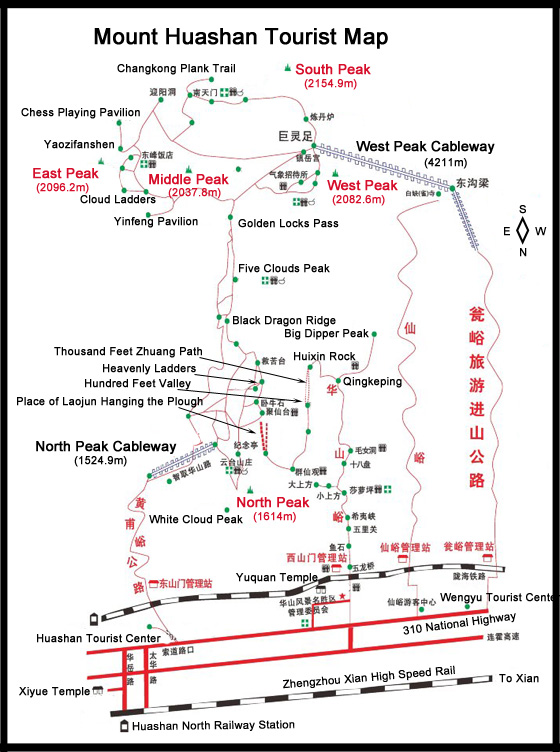
I’m sorry to report I don’t have photos of that: the first time I was there, I was put off by the crowds. I told myself I’d be coming back anyway, and would come before the cable cars had deposited enough tourists on West Peak. The second time, though, it was closed due to ice (even in early May, it is still chilly at the top).
From south peak, if you ignore the plank walk, you can follow the path to East Peak, which is where my hotel was located.
If you’re imagining Premier Inn, think again: Dongfei hotel is a rather stinky bunk-house. First time I came I paid premium rates and got a small room with a mattress and a duvet. Second time I thought no way and paid 90% less, and got a bunk in a busy bunk room filled with snorers. But it did the job: allowed me to recharge my phone and rest my head for a few hours. There are no showers, just to tell you (not that you were expecting that, of course). Oh, and the toilets are festival-style portaloos, albeit of the squat format. Bring your own paper.
Having rested up on East peak, I took a walk around the East peak itself. Chess-Playing Pavilion is a wonderful photographic subject: on non-icy days it’s accessible using another harness walk. It stands remote and majestic against a backdrop of scenic, unspoilt mountains.
Once the crowds have dispersed, later in the day, with hours of daylight still left, you can really appreciate the beauty of this place. I could not get enough of the valleys and peaks beyond the Chess Playing Pavilion, but tore myself away to go and explore the peak itself. From there, you can see a vast plain to the north. Huayin the city where you arrived by train is just barely visible through the haze on the panorama stretched out before you. A river ribbons through the plain below, the Wei, which joins the Yellow River just a bit further along beyond the city. China’s history and its soul are here, if you stop and listen.
I found I was alone on the peak, with just my thoughts, and can’t tell you how long I was sat here.
Just below the peak is another ladder carved into the stone rocks, for the brave or photogenic to post on. These days you can haul yourself up using the steel chains slung down, but the mind boggles how ancient Taoist priests did it. Maybe they levitated. There’s a wooden stairwell for those for whom either of these options is unappealing.
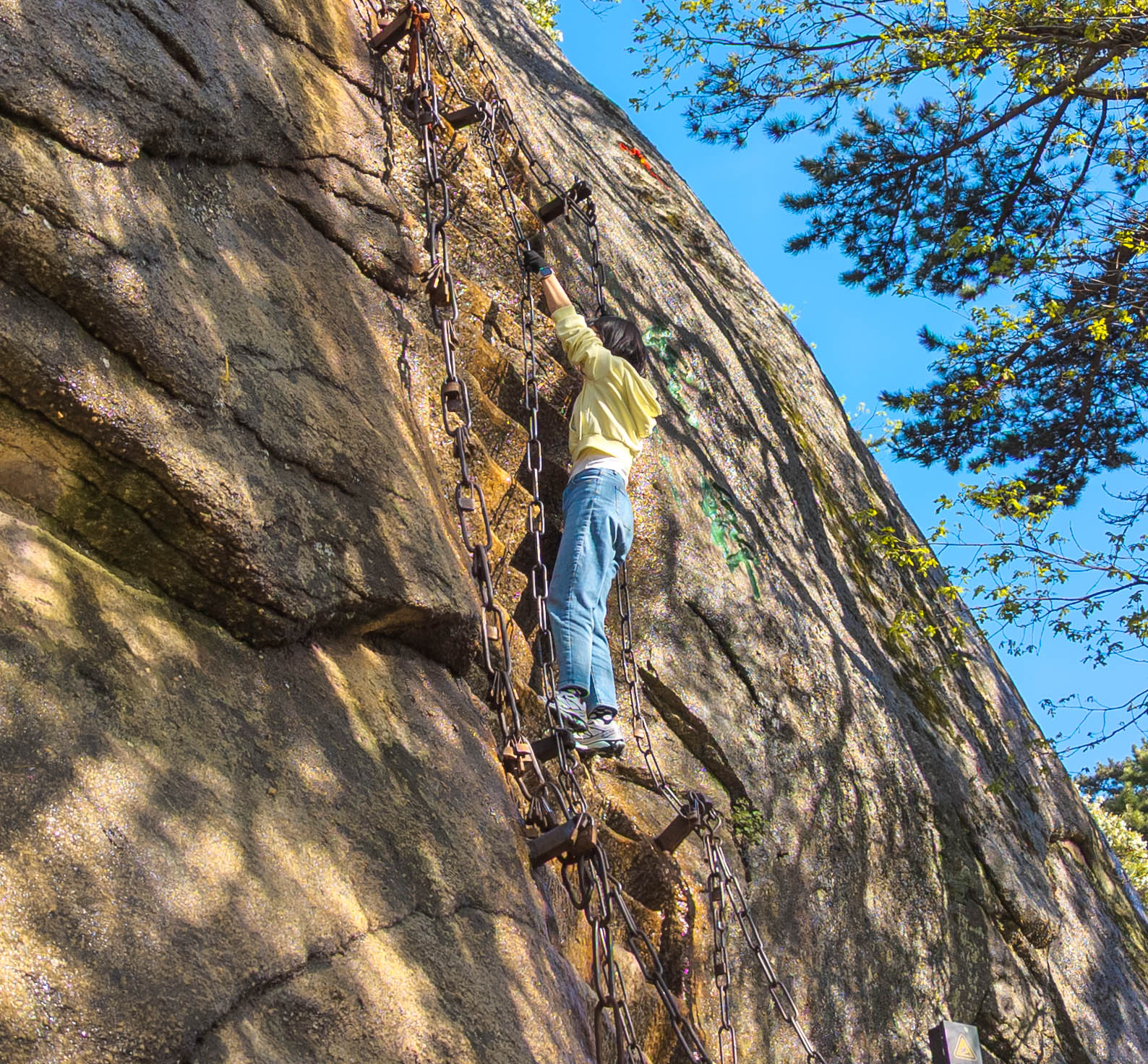
Central Peak is probably my favourite. It’s the lowest, and from it you can see the other peaks of the mountain rising up on all sides, and see the various hotels and shrines through the trees. It’s less visited than the others and is another place where you can easily sit and meditate once the crowds have thinned out. There is another temple here, which I did not photograph out of respect, and a… monk? Who was there both times I visited, tending the place.
Phoenix Attracting Pavilion also attracted my attention: a small pavilion set in the shadow of East Peak, with a story of an Emperor’s daughter and a flute player who absconded here and made such beautiful music that even the Phoenix stopped to listen. If anything the views from here across the plains to the north are even better than on the main peak.
I returned to the bunk house on East Peak with the sun set, and set my alarm for stupid o’clock. I wanted to see the sunrise. The first time I was here, I missed it due to heavy cloud. But it was a cold, starry night, and I was hopeful.
Getting up early to secure my place, I found that a lot of others had hiked the mountain trail overnight, in order to see the sunrise too. My friend Chastaine, of Harbin fame, told me she had tried to do that once, but taken too long and missed it by almost an hour…
In any case, I was able to find a place to stand, and watch the gathering light. Soon enough, the sun was up, casting orange reflections on the Yellow River.
Like Stonehenge solstice sunrises, there is a communal sense of awe that is palpable, even in this cynical age, when we see the sun come up again somewhere that others have also watched for the same thing. Something fundamental in doing that is still reachable through the detritus of modernity.
Once I’d shot some more pictures of the Chess Pavilion in the dawn’s light, there was not much more to do here… I checked out, and headed to the only other peak I hadn’t seen.
North Peak is quite a walk from the Central peak, along “black dragon ridge” – a narrow path with a precipitous drop down one, and sometimes two, sides.
From North Peak, with a few more temples to look at, there’s another cable car and bus to return you to the gate, where the taxis will ferry you back to the real world for 40 yuan. In less than an hour you are back in bustling Xi’an and the current year.
Unlike some of the other places I visited in China, Hua Shan left an undeniable impression on me. There are perhaps places I saw that were more beautiful (though not much) but none that actually felt as authentic. It’s the one place that I visited that I feel sad that I might never see again.
Other Trips
Here are some of the other places I’ve been…
2022 Xi’an
The ancient city of Xi’an is now a thriving modern metropolis, but carries reminders of its significant history in its Pagodas and the famous Terracotta Army
2022 Beijing
China’s famous capital has some sights that you’d kick yourself if you ever came here and didn’t see: The Great Wall, The Forbidden City and its Temple of Heaven.
2023 Tokyo
A whistlestop tour to Tokyo, where I failed to see Mount Fuji but accidentally managed to glimpse Godzilla.

